Meet Our Past Interns - 2018
- Alternative Energy
-
Choi, Hee Joo ’21
Chemical and Biological Engineering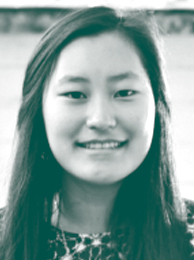 PROJECT
PROJECTEnsuring the Sustainability of Perovskites, a Potentially Transformative Solar Material
ORGANIZATION / LOCATIONMyneni Group, Department of Geosciences, Princeton University- Princeton, New Jersey
MENTOR(S)Satish Myneni, Professor of Geosciences; Clay Hamill, Ph.D. candidate, Chemical and Biological Engineering; Sara Thomas, Postdoctoral Research Associate, Geosciences
SEE PRESENTATIONPerovskite solar cells have recently gained popularity as a possible alternative to siliconbased solar cells due to easier and lower-cost manufacturing. They have yet to be commercialized, however, because perovskites are unstable and degrade quickly when exposed to elements such as humidity and oxygen. My internship explored the effect of humidity and air on the degradation patterns of tin-based and PEDOT-based (an organic mixture) electron transport layers in photovoltaic perovskite films. I monitored the environment in which films were degraded by manipulating the relative humidity, then taking X-ray diffraction (XRD) scans of the films throughout the stages of degradation. As a result of my internship, I learned to operate the XRD machine, interpret its data, and code in R software to create plots and overlay data. I also learned how to create perovskite films and their characteristics. My research will aid in understanding more about perovskite degradation and its byproducts. This internship helped me realize that I’d like my future career to be related to the environment. I’m also considering postgraduate education after my time at Princeton.
-
Chen, Nick ’20
Mechanical Engineering
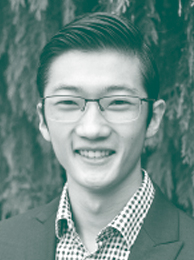 PROJECT
PROJECTHelmholtz Resonators for Energy Harvesting- Princeton, New Jersey
ORGANIZATION / LOCATIONSmits Fluid Mechanics Lab, Department of Mechanical and Aerospace Engineering, Princeton University
MENTOR(S)Alexander Smits, Eugene Higgins Professor of Mechanical and Aerospace Engineering, Emeritus; Daniel Floryan, Ph.D. candidate, Mechanical and Aerospace Engineering; Tyler Van Buren, Lab Manager, Mechanical and Aerospace Engineering
My project focused on generating electricity using Helmholtz resonance, which occurs when air flows over the opening of a container. This can result in powerful pressure fluctuations, and often produces an audible tone, such as when air blows across the opening of a bottle. I worked to improve the design of a prototype that combines Helmholtz resonance with piezoelectric elements — which produce an electric charge from mechanical stress such as vibration — to convert sound energy into electricity. Previous designs have only worked when compressed air is pumped directly over the opening of the resonator. I was tasked with altering this device to work in natural wind conditions. Through extensive observation and testing, and after building multiple prototypes, I successfully created an omnidirectional top insert for the resonator, allowing it to generate power in natural wind. My internship gave me the opportunity to create a successful device through research, design and analysis. This process broadened my understanding of how deeply connected creativity and technical understanding are to engineering and research.
-
Copeland , Charles ’19
Geosciences
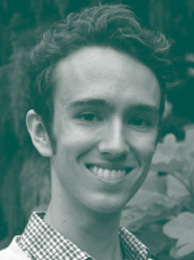 PROJECT
PROJECTUnderstanding Contributions of Bioenergy to Mid-Century Decarbonization in the U.S.
ORGANIZATION / LOCATIONEnergy Systems Analysis Group, Princeton University- Princeton, NJ
MENTOR(S)Eric Larson, Senior Research Engineer, Andlinger Center for Energy and the Environment
Certificate(s): Environmental Studies
I aimed to improve the estimates used to determine the potential for the development of a sustainable biofuels industry in the United States. I pursued two main questions. First, how much additional biomass could be harvested sustainably for a second-generation, cellulosic biofuels industry without depleting natural resources or competing with crops for land use? Second, how quickly could such an industry be built? After reviewing the literature, I concluded that some previous studies were overestimating the amount of corn stover — which consists of the plant’s leaves, stalks and cobs — that could be sustainably harvested. I developed my own constraints on the sustainable amount of corn stover that could be harvested for each county. I then used a simple model based on the cost of transport and yield to predict where, and in what order, cellulosic biofuel refineries are likely to be built. Using the development of the cornethanol industry as a model, I examined possible timeframes for the evolution of a cellulosic biofuels industry under different policy options. This experience has encouraged me to pursue a career combining policy, environment and energy science.
-
Dasgupta, Anushka ’19
Chemical and Biological Engineering
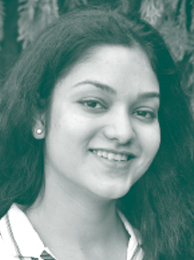 PROJECT
PROJECTQuality Control in Mg-Ion Battery Fabrication
ORGANIZATION / LOCATIONArnold Group, Department of Mechanical and Aerospace Engineering, Princeton University-Princeton, New Jersey
MENTOR(S)Craig Arnold, Professor of Mechanical and Aerospace Engineering; Kai Filsinger, Postdoctoral Research Associate, Princeton Institute for the Science and Technology of Materials
Certificate(s): Materials Science and Engineering
I interned with the Arnold Group investigating the inconsistent performance of rechargeable magnesium-ion (Mg-ion) batteries. Mg-ion batteries are an attractive candidate for use in transportation and large-scale energy storage. They have a high theoretical volumetric capacity and are less susceptible to overheating than lithium-ion batteries. During the course of this project, I learned more about solid-state synthesis and the interpretation of X-ray diffraction patterns and impedance spectra. I gained an understanding of how each stage of battery fabrication impacts the performance of the assembled cell, and I became more familiar with the equipment used. My mentor and the other members of the lab taught me a great deal about intelligent experiment design and gave me a sense of life as a full-time researcher.
-
Gai, Sean ’20
Computer Science
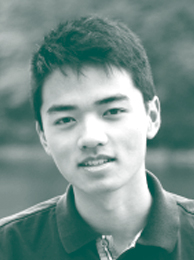 PROJECT
PROJECTEnsuring the Sustainability of Perovskites, a Potentially Transformative Solar Material
ORGANIZATION / LOCATIONMyneni Group, Department of Geosciences, Princeton University- Princeton, New Jersey
MENTOR(S)Satish Myneni, Professor of Geosciences; Clay Hamill, Ph.D. candidate, Chemical and Biological Engineering; Sara Thomas, Postdoctoral Research Associate, Geosciences
SEE PRESENTATIONCertificate(s): Statistics and Machine Learning
I had the opportunity to participate in research focused on the environmental factors affecting the degradation of perovskite films, which are a promising material for solar cells. The goal of this research was to mitigate, or prevent, the degradation of perovskites so that the lead they contain does not leach into the environment. This research could allow for the commercialization of stable perovskite solar cells with very high power-conversion efficiencies. My role was to expose perovskite films to different combinations of light, humidity and oxygen. I then used infrared spectrometry and X-ray diffraction to track the films’ degradation over time and determine the relative importance of each environmental factor. This experience taught me patience for scientific study — some ideas led to dead ends and some results did not match my predictions. I also learned how to visualize data by converting numerical figures into plots. Although I may not end up a scientist, I gained a variety of analytical and problem-solving skills through this experience.
-
Kimojino, Joyce ’19
Civil and Environmental Engineering
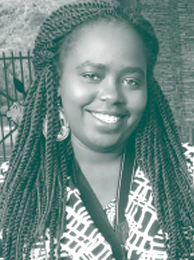 PROJECT
PROJECTEnergy-Access Modeling
ORGANIZATION / LOCATIONCrossBoundary Energy; Dalberg Global Advisory- Nairobi, Kenya
MENTOR(S)Mahiri Mwita, Lecturer in Princeton Institute for International and Regional Studies, Princeton University; Gabriel Davis, Head of Energy Access, CrossBoundary Energy; Michael Bailman, Associate Principal, Dalberg Global Advisory
SEE PRESENTATIONCertificate(s): African Studies
I had the opportunity to intern with an energyaccess NGO in Kenya. Like many developing countries, Kenya is struggling to provide its citizens with clean and sustainable energy. Although the country has the potential to generate ample solar energy, that sector has yet to take off. The aim of my internship was to apply data analysis to better understand what factors affect energy consumption, and to determine the lowest-cost energy solutions for Kenya and for Africa. I also worked on a predictive model to help solar-energy developers predict the demand for electricity in new locations and determine (within a small margin of error) the equipment needed to provide those communities with energy. Working with CrossBoundary Energy confirmed my interest in, and deep passion for, better understanding how renewable energies can help mitigate some of the world’s most challenging issues. I plan to pursue this research for my senior thesis and for a career in renewable energy.
-
Mays, Rebecca ’21
Chemical and Biological Engineering
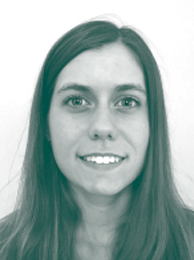 PROJECT
PROJECTSafer Lithium Batteries Through Control of Lithium Plating
ORGANIZATION / LOCATIONArnold Group, Mechanical and Aerospace Engineering, Princeton University- Princeton, New Jersey
MENTOR(S)Craig Arnold, Professor of Mechanical and Aerospace Engineering; Xinyi (Minnie) Liu, Ph.D. candidate, Mechanical and Aerospace Engineering
SEE PRESENTATIONThe prevalence of lithium-ion batteries in everyday products, from calculators to cars, makes their safety and functionality a priority. Too many charges or defects within these batteries can lead to internal metallic growths known as dendrites that can cause cells to short circuit. My research focused on studying the effects of different defect sizes in a cell’s separator. I simulated defects by compressing portions of the separator to create pore closure. I then laser-cut rectangles of various sizes into each compressed separator. I accumulated hundreds of images of cells containing dendrites, which provided an average image of where they are more likely to occur in cells containing defects. My work this summer provided useful insight into an academic lab setting. It gave me more confidence and knowledge related to conducting research and obtaining reliable results.
-
Owens, Caleb ’19
Mechanical and Aerospace Engineering
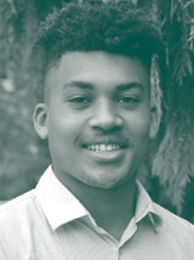 PROJECT
PROJECTMechanical Engineering and Design for High-Rate Recharging Vehicles
ORGANIZATION / LOCATIONLightening Energy-Picatinny Arsenal, Wharton, New Jersey
MENTOR(S)Eric Materniak ’14, Program Manager and Engineer, Lightening Energy
SEE PRESENTATIONEnvironmental Internship Program 15 The main goal of my internship was to develop innovative solutions for high-rate recharging batteries intended for vehicular use. My responsibilities included research, computer-aided design, 3D printing, and rapid prototyping and subsequent testing. I learned how to split my time between several different projects while working in a contract-based environment. My time at Lightening Energy sparked my interest in clean and alternative energy and electric vehicles. I intend to pursue this field when I enter the workforce next year.
-
Penza, Matthew ’19
Computer Science
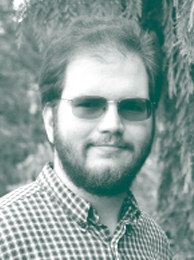 PROJECT
PROJECTUnderstanding Analysis of μ Behaviors in Fusion Reactors
ORGANIZATION / LOCATIONPrinceton Plasma Physics Laboratory- Princeton, New Jersey
MENTOR(S)Samuel Cohen, Director of Program in Plasma Science and Technology, Princeton Plasma Physics Laboratory
Certificate(s): Statistics and Machine Learning
I interned at the Princeton Plasma Physics Laboratory (PPPL) on the Small, Clean Fusion Reactors Project. My role was twofold. First, I implemented a time-series model of the nonadiabaticity (gaining or losing heat over time) of the magnetic strength of muon particles (μ) inside magnetic mirror machines. Second, I analyzed the characteristics of muon particles in diverging magnetic fields as a chaotic dynamical system that is highly sensitive to starting conditions. These are important properties to understand to further the development of the Princeton Field-Reversed Configuration (PFRC) fusion reactor, a promising future source of clean energy. FRCs are unique among fusion-reactor designs because they are small enough to be transported intact, allowing for mobility and modularization. While working at PPPL, I had the opportunity to personally collect and analyze experimental data. This summer allowed me to step outside of my comfort zone as a computer science major, and it was a valuable chance to tackle an unfamiliar problem.
-
Preston, Alex ’21
Mechanical and Aerospace Engineering
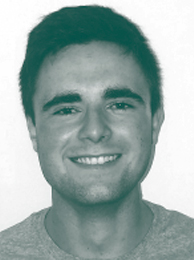 PROJECT
PROJECTHelmholtz Resonators for Energy Harvesting
ORGANIZATION / LOCATIONSmits Fluid Mechanics Lab, Department of Mechanical and Aerospace Engineering, Princeton University- Princeton, New Jersey
MENTOR(S)Alexander Smits, Eugene Higgins Professor of Mechanical and Aerospace Engineering, Emeritus; Daniel Floryan, Ph.D. candidate, Mechanical and Aerospace Engineering; Tyler Van Buren, Lab Manager, Mechanical and Aerospace Engineering
My research focused on attempting to improve the power-generation capabilities of a concept Helmholtz resonator wind-power harvester. The Helmholtz resonator is a container with specific dimensional requirements in neck size and cavity volume. Wind power is created when incoming air presses down on an installed piezoelectric disk, which produces voltage in response to physical deformation. I focused on examining the efficiency and maximum power generation of the most recent resonator setup and attempted to improve these figures through alterations to the system’s wiring. I gained insight into the world of academic research, valuable experience working on a substantial project in a small group environment, and a knowledge of conducting high-level research. These takeaways will help me in my coursework and as I write my senior thesis. The experience also has made me think about a potential future in academia, something I would not have considered before. I will be forever thankful to PEI and the entirety of Prof. Smits’ lab for this opportunity.
-
Rodriguez, Michael ’20
Mechanical and Aerospace Engineering
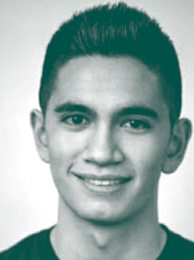 PROJECT
PROJECTMechanical Engineering and Design for High-Rate Recharging Vehicles
ORGANIZATION / LOCATIONLightening Energy- Picatinny Arsenal, Wharton, New Jersey
MENTOR(S)Eric Materniak ’14, Program Manager and Engineer, Lightening Energy
SEE PRESENTATIONCertificate(s): Robotics and Intelligent Systems
Batteries are a critical link for achieving widespread renewable energy. Lightening Energy seeks to mitigate current problems regarding weight and limited energy capacity by developing novel lithium-ion batteries that are lightweight and charge within minutes. These capabilities generate massive amounts of heat, which, if left unmanaged, can cause exothermic reactions such as batteries exploding. In collaboration with other interns, I used computer-aided design and computational fluid dynamics software to develop a prototype active-cooling system that would maintain the safety and performance of these battery systems. The team then assembled the prototype, which included parts we had machined using a computer numerical-control mill that cut pieces of custom-fit aluminum. I especially enjoyed Lightening Energy’s agility. Along with the other interns, I regularly joined, and contributed to, discussions with senior engineers and even the CEO. This gave me great insight into the workings of a small company.
-
Santhanam, Hari ’20
Electrical Engineering
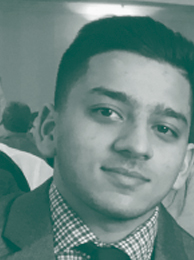 PROJECT
PROJECTElectrical Engineering for High-Rate Recharging Vehicles
ORGANIZATION / LOCATIONElectrical Engineering for High-Rate Recharging Vehicles- Picatinny Arsenal, Wharton, New Jersey
MENTOR(S)Eric Materniak ’14, Program Manager and Engineer, Lightening Energy
SEE PRESENTATIONCertificate(s): Statistics and Machine Learning
The goal of the project I worked on was for the electrical and mechanical teams to develop an efficient means of powering an industrial device. As part of the electrical team, I worked on wiring a battery management system to an arrangement of efficient cells. I also worked with other team members to ensure that we met certain checkpoints. As a result of participating in this internship opportunity, I gained a great deal of experience in hardware engineering, and I learned how to develop an idea into a prototype. My active role in this project helped me gain a new appreciation for alternative energy solutions, and I plan to seek environmentally conscious solutions in future projects. -
Sidhu, Harjot ’19
Electrical Engineering
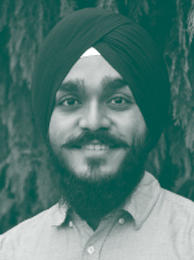 PROJECT
PROJECTElectrical Engineering for High-Rate Recharging Vehicles
ORGANIZATION / LOCATIONLightening Energy- Picatinny Arsenal, Wharton, New Jersey
MENTOR(S)Eric Materniak ’14, Program Manager and Engineer, Lightening Energy
SEE PRESENTATIONI worked on creating a system-design prototype for the industrial application of a battery matrix, battery charger, and battery management system (BMS). Each subsystem consisted of its own challenges. For instance, it was important to create a battery matrix that safely and effectively held the batteries together and allowed them to charge and discharge. Interconnectivity between these subsystems was crucial in order for the design to operate efficiently. One of my main responsibilities was to establish a Controller Area Network (CAN bus) protocol. This allowed the BMS to communicate with the battery pack to determine if more charging was needed. My work furthered the research I did with Lightening Energy in summer 2017. I enjoyed being able to take theoretical research and build it, hands-on, into a prototype.
-
Taylor, Benjamin ’19
Physics
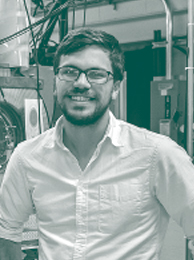 PROJECT
PROJECTModeling PFRC Reactor Scrape-Off Layer Using UEDGE
ORGANIZATION / LOCATIONPrinceton Plasma Physics Laboratory- Princeton, New Jersey
MENTOR(S)Samuel Cohen, Director of Program in Plasma Science and Technology, Princeton Plasma Physics Laboratory
SEE PRESENTATIONI joined Professor Cohen’s working group studying the Princeton Field-Reversed Configuration (PFRC) nuclear fusion device. This device, which I had studied for my spring junior paper and will continue studying for my thesis, uses the alternative fuel Helium-3. This fuel is currently being prototyped for use in space propulsion. In addition to gaining a deeper understanding of the PFRC, I focused on modeling the “scrape-off layer” — which is the outermost edge of the plasma within the device. To do this, I used a plasma “fluid” code known as UEDGE and a modeling framework called OMFIT. My contribution to the large body of work by previous interns was the implementation of a new and accurate geometry of the scrapeoff layer. I did this with the help of Gingred, a recently developed grid-generating program. I plan to conduct an in-depth analysis of this new geometry for my senior thesis. The time working with the lab group focused my interest in nuclear and plasma physics and increased my empathy for the cause of fusion energy.
-
Willingham, Ashley ’20
Operations Research and Financial Engineering
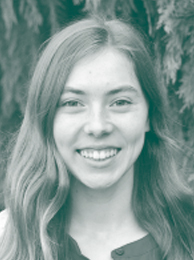 PROJECT
PROJECTFinancial Modeling and Optimization for Electric Mobility Business
ORGANIZATION / LOCATIONLightening Energy-Picatinny Arsenal, Wharton, New Jersey
MENTOR(S)Eric Materniak ’14, Program Manager and Engineer, Lightening Energy
SEE PRESENTATIONCertificate(s): Engineering and Management Systems, Statistics and Machine Learning
I created financial models for two projects related to the development of fast-recharging solutions for electric vehicles. For the first project, I developed a model for a commercial development program that uses component and operating expenditures to optimize costs, benefits and financial returns. I learned how to work with others outside of my field by collaborating with the mechanical and electrical engineering interns to understand their battery-pack design in order to create the model. For the second project, I worked on scaling a new chemistry of lithium-ion battery for production by conducting market research and a cost analysis. I also developed a model based off of the Battery Performance and Cost (BatPaC) model from Argonne National Laboratory. I learned about the materials science behind lithium-ion batteries and how battery chemistries affect performance. This internship increased my interest in alternative energy and electric vehicles, and it allowed me to experience working for a cutting-edge technology company.
-
Zhang, Edward ’19
Chemistry
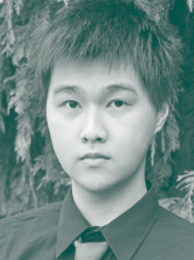 PROJECT
PROJECTBinary Transition-Metal Oxide Electrocatalysts for the Oxygen Evolution Reaction
ORGANIZATION / LOCATIONKoel Group, Department of Chemical and Biological Engineering, Princeton University- Princeton, New Jersey
MENTOR(S)Bruce Koel, Professor of Chemical and Biological Engineering; Rachel Selinsky, Associate Research Scholar, Chemical and Biological Engineering; Xiaofang Yang, Visiting Research Collaborator, Chemical and Biological Engineering
Certificate(s): Music Performance
To make hydrogen gas a viable fuel and means of energy storage, we must tackle one of the biggest inefficiencies in water electrolysis (using electricity to split water into oxygen and hydrogen gas) — the oxygen evolution reaction (OER). Ideally, we would like a highly active and inexpensive catalyst that is stable in concentrated acid. To this end, I designed and conducted experiments to see how well zirconium-iridium mixed oxides can act as electrocatalysts for OER. This involved synthesizing the catalyst using ionbeam sputtering, testing the catalyst in an electrochemical cell, and probing physical properties using various surface-science techniques, such as X-ray photoelectron spectroscopy, scanning electron microscopy and energy dispersive X-ray spectroscopy. The mixed-oxide material acted as an electrocatalyst, and I found that these catalysts had excellent activity and improved stability compared to iridium oxide. As I intend to apply to graduate school, this experience offered me insights into my life ahead as a researcher.
-
Zhao, Jinjin ’19
Computer Science
 PROJECT
PROJECTPedestal Predictions Using Neural Networks
ORGANIZATION / LOCATIONPrinceton Plasma Physics Laboratory- Princeton, New Jersey
MENTOR(S)Samuel Cohen, Director of Program in Plasma Science and Technology, Princeton Plasma Physics Laboratory
I worked at the Princeton Plasma Physics Laboratory researching the intersection of nuclear fusion and neural networks. Neural networks allow numerous machine learning algorithms to work together to process complex data. The goal of my project was to learn something about fusion data that cannot be explained by computational or theoretical models. This could help advance fusion reactors by allowing us to better predict the results of future experiments and, thus, design reactors that would achieve desired outcomes. I primarily worked on data collection, processing experimental results and measurements, and creating actual neural networks. I gained skills in dealing with experimental data, more experience working in machine learning, and a lot of knowledge about the state of fusion research. I am planning to extend my research into my senior thesis, so this internship has helped further my research journey.
-
Zheng, Fred ’19
Mechanical and Aerospace Engineering
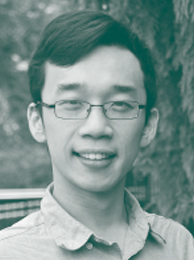 PROJECT
PROJECTMechanical Engineering and Design for High-Rate Recharging Vehicles
ORGANIZATION / LOCATIONLightening Energy
MENTOR(S)Eric Materniak ’14, Program Manager and Engineer, Lightening Energy
SEE PRESENTATIONCertificate(s): Robotics and Intelligent Systems
I worked with Lightening Energy on thermal management in high-rate recharging batteries, which generate high amounts of heat when charging. I had the opportunity to design and manufacture a demonstration unit for a dedicated cooling system. This internship allowed me to practically apply the knowledge I learned in thermodynamics. I also learned multiple computational tools used in industry, such as Creo and Autodesk computational fluid dynamics software. Toward the end of the internship, I got the chance to manufacture parts using a computer numerical control (CNC) milling machine and computer-aided manufacturing (CAM). This experience with CNC machining and computational modeling will help in my plans to enter the industry after graduation.
- Biodiversity and Conservation
-
Amatya, Amy ’21
Geosciences
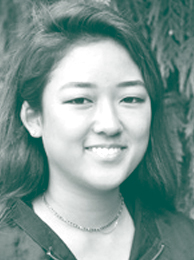 PROJECT
PROJECTAcclimation Dynamics of a Tropical Coral to a Temperature-Induced Disturbance Event
ORGANIZATION / LOCATIONBermuda Institute of Ocean Sciences
MENTOR(S)Samantha de Putron, Associate Scientist, Bermuda Institute of Ocean Sciences; Gretchen Goodbody- Gringley, Assistant Scientist, Bermuda Institute of Ocean Sciences
SEE PRESENTATIONI was part of a project studying the adaptive mechanisms of mustard hill coral (Porites astreoides) against rapid climate change from the perspective of reproductive ecology. Studies of larval size are imperative to understanding coral fitness and thermal acclimation. Specimens with larger larvae exhibit higher adult survivorship. I investigated the effects of formalin fixation — preserving coral samples with aqueous formaldehyde — on larval volume, which would make coral-size studies more comprehensive and flexible. I photographed larvae every day to determine volume before and after fixation using machine learning-facilitated image analysis. I gained lab experience, greater familiarity with the MATLAB programming language, and guidance from kind and knowledgeable mentors. Most importantly, I came away with a better grasp of what it means to pursue meaningful work. Corals serve as valuable assays of marine biodiversity. They capture and communicate the universality of climate change. In this way, my summer experience inspired me to pursue socially impactful and globally relevant work in whichever field I follow.
-
Brownell, Mckenna ’20
Ecology and Evolutionary Biology
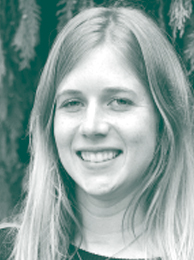 PROJECT
PROJECTZebra Foraging Behavior in the Presence of Dung
ORGANIZATION / LOCATIONMpala Research Centre- Nanyuki, Kenya
MENTOR(S)Daniel Rubenstein, Class of 1877 Professor of Zoology, Professor of Ecology and Evolutionary Biology, Princeton University
SEE PRESENTATIONCertificate(s): Spanish Language and Culture
I conducted research to determine how the presence of dung affects the foraging behavior of Grévy’s and plains zebra. In ideal conditions, zebra will graze on the most nutrient-dense grass. The presence of dung helps to fertilize surrounding grass. Dung, however, contains parasites to which zebra are susceptible, specifically Strongyle nematodes. My team and I observed zebra grazing behavior by setting up artificial “plots” that controlled for the amount and location of dung. Camera traps recorded zebras grazing and from those data we were able to determine whether the animals take dung as a cue to graze elsewhere. A typical day in the field consisted of maintaining the plots, collecting fresh dung, and observing zebra as they grazed. This exciting internship opened doors for me in terms of pursuing research as a career, and it helped me apply the science I have learned in the classroom.
-
Dietrich, Madeleine ’20
Ecology and Evolutionary Biology
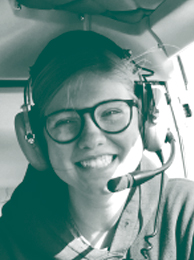 PROJECT
PROJECTPlant Traits and Animal Diet on the African Savanna
ORGANIZATION / LOCATIONPringle Lab, Department of Ecology and Evolutionary Biology, Princeton University- Gorongosa National Park, Mozambique
MENTOR(S)Robert Pringle, Associate Professor of Ecology and Evolutionary Biology; Arjun Potter, Ph.D. candidate, Ecology and Evolutionary Biology
Certificate(s): Environmental Studies
I worked as part of a research team looking at the relationship between animal diets and plant traits in Gorongosa National Park in Mozambique. Gorongosa is a fascinating place to work due to the range of biodiversity and the park’s complicated history. Many of the park’s species — including large herbivores such as elephants and antelopes — were almost wiped out during Mozambique’s long civil war (1977- 1992). Thanks to the Gorongosa Restoration Project, wildlife is returning to the park, creating a dynamic and unique research opportunity. Our research this summer explored why herbivores eat what they eat. We collected, analyzed and processed hundreds of different plant samples every day, looking at a wide range of physical and chemical properties that might help explain why a plant was or was not part of an animal’s diet. There is still a lot of work to be done, but it was an incredible experience to play a role in answering this complicated question.
-
Eller, Madison ’20
Woodrow Wilson School
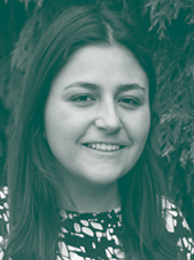 PROJECT
PROJECTTeaching Assistant for Conservation Clubs
ORGANIZATION / LOCATIONMpala Research Centre- Nanyuki, Kenya
MENTOR(S)Daniel Rubenstein, Class of 1877 Professor of Zoology, Professor of Ecology and Evolutionary Biology, Princeton University
Environmental Internship Program 29 I interned with the Northern Kenya Conservation Clubs, a program that encourages environmental conservation and teaches related topics to local primary and secondary schools. I taught at different schools daily and helped develop lesson plans according to the students’ needs. Our daily lesson usually involved reading a book, teaching new concepts or vocabulary words, and playing a game based on the lesson. My fellow interns and I also focused on expanding the program by developing a new secondary-school curriculum. The main insight I gained was how to overcome cultural and language barriers by adapting my lesson plans and teaching practices. Changing how we dealt with different age groups, and even distinct schools, helped to improve the efficiency of our program. This experience influenced my academic studies because I am now focusing on education policy. I also am considering incorporating teaching or education into my career, potentially even reengaging with the communities of Northern Kenya.
-
Falconer, Kristie ’20
Ecology and Evolutionary Biology
 PROJECT
PROJECTBuffel Grass Seed Preferences, Predation and Dispersal in Kenya Home Range by Messor Harvester Ants
ORGANIZATION / LOCATIONMpala Research Centre- Nanyuki, Kenya
MENTOR(S)Dino Martins, Lecturer and Visiting Research Scholar, Ecology and Evolutionary Biology, Princeton University; Robert Plowes, Research Scientist, Department of Integrative Biology, University of Texas- Austin; Kennedy Saitoti, Research Assistant, Mpala Res
SEE PRESENTATIONI had the privilege to travel to Kenya where I evaluated the role that harvester ants have on the dispersal of buffel grass. Buffel grass is native to Kenya, but is invasive in Texas, Arizona and parts of northern Mexico. The grass chokes out native vegetation due to its high drought tolerance and it has a tendency to cause fires. To evaluate this problem, I wanted to figure out how buffel grass is dispersed in its home range. I collected data on the seed preferences of two unstudied dispersal species of harvester ants, Messor cephalotes and Messor angularis. I compared the percentages of seed species in the immediate environment to what the ants physically carried along their trails and to the seed husks present in their “trash” piles. This internship involved a lot of lab work, including counting, measuring, identifying and weighing individual seeds and ants under microscopes. Thanks to my mentors, I learned a lot about the troubleshooting and flexibility inherent to field research, along with many skills for organizing field data.
-
Ibrahim, Nourhan ’20
Ecology and Evolutionary Biology
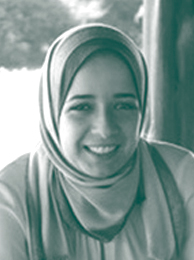 PROJECT
PROJECTTeaching Assistant for Conservation Clubs
ORGANIZATION / LOCATIONMpala Research Centre- Nanyuki, Kenya
MENTOR(S)Daniel Rubenstein, Class of 1877 Professor of Zoology, Professor of Ecology and Evolutionary Biology, Princeton University
As a teaching assistant with the Northern Kenya Conservation Clubs, I implemented and taught lesson plans, and modified the curriculum. I also helped organize a Community Conservation Day at 14 schools. On a typical day, I would go to a school to teach. My lesson plans covered topics pertinent to Laikipia County and would involve reading a story, teaching a lesson, and playing a game or completing an activity that complemented the material. I gained a lot of teaching and general skills during this work. I learned to overcome language barriers by adapting lesson plans to include clarifying questions and by drawing concepts on the chalkboard. I also learned to effectively communicate ideas through games and activities, and to adapt lessons to different age groups. I hope to incorporate education into my future academic study and independent work, as well as engage with the communities of Northern Kenya again in some capacity.
-
Kuziel, Luca ’21
Ecology and Evolutionary Biology

 PROJECT
PROJECTEcological Dynamics of African Herbivores During the Reintroduction of Leopards
ORGANIZATION / LOCATIONPringle Lab, Department of Ecology and Evolutionary Biology, Princeton University- Gorongosa National Park, Mozambique
MENTOR(S)Pringle Lab, Department of Ecology and Evolutionary Biology, Princeton University Mentor(s): Robert Pringle, Associate Professor of Ecology and Evolutionary Biology; Matthew Hutchinson, Ph.D. candidate, Ecology and Evolutionary Biology; Arjun Potter, Ph.D. candidate, Ecology and Evolutionary Biology
SEE PRESENTATIONI worked in Mozambique’s Gorongosa National Park on a study of how large herbivores — which were accustomed to a relatively predator-free environment — would respond to the reintroduction of predators such as leopards. This is important for park management as predator reintroduction is a crucial step for recovering ecosystems. It also is interesting from a theoretical standpoint. To conduct the research, we studied the feeding and watching behavior of antelope to measure how safe they seemed to feel. We also wanted to understand their diets, which can shed light on resource use within the ecosystem, as well as on how the animals feed when they feel safe or threatened. To that end, we collected dung samples from which plant DNA can be extracted to determine antelope diet and health. I learned a huge amount about fieldwork and methods in ecology, such as how to build a small experiment. It was incredible to be involved in every step. Working in the field in a stunning and healthy park reaffirmed my love of nature and has set me on a path to a career in conservation biology and restoration ecology.
-
Machette, Taylor ’20
Ecology and Evolutionary Biology
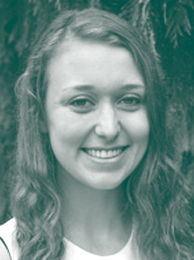 PROJECT
PROJECTSite Fidelity, Residency and Dispersal Patterns of Eastern North Pacific Blue Whales at Coastal Tagging Sites
ORGANIZATION / LOCATIONThe Marine Mammal Institute’s Whale Telemetry Group, Oregon State University- Newport, Oregon
MENTOR(S)The Marine Mammal Institute’s Whale Telemetry Group, Oregon State University Mentor(s): Daniel Palacios, Assistant Professor of Fisheries and Wildlife, Oregon State University
Certificate(s): Environmental Studies
I worked on a project with Oregon State University’s Whale Telemetry Group (WTG) to assess the extent of tagging bias in their data on Eastern North Pacific blue whales tagged between 1993-2017. Tagging bias arises from the pattern of tag deployments. For blue whales, these have occurred in the few areas along the California coast where the animals gather around prey patches for long periods of time during their summer feeding season. To quantify tagging bias, I characterized the movement patterns of groups of blue whales relative to their respective tagging sites by using metrics of dispersal, residence time and group cohesion. While analyzing the data, I justified my technical choices in the context of the larger-scale ecological picture pertaining to blue whale foraging strategies and migration patterns. My research enabled me to recommend several ways in which tagging bias can be mitigated within populationlevel studies of the WTG’s blue whale tracking data. I plan to incorporate the results of this project into my independent senior-thesis work.
-
McCallister, Maggie ’19
Civil and Environmental Engineering
 PROJECT
PROJECTImpact of Grazing Regimes on Rangeland Quality and Wildlife- Livestock Use
ORGANIZATION / LOCATIONMpala Research Centre- Nanyuki, Kenya
MENTOR(S)Daniel Rubenstein, Class of 1877 Professor of Zoology, Professor of Ecology and Evolutionary Biology, Princeton University
SEE PRESENTATIONCertificate(s): Environmental Policy, Sustainable Energy
I worked on a study that focused on how different grazing regimes affect habitat use by wildlife. I followed the movements and grazing behaviors of various livestock species under different husbandry regimes. I then compared the impacts of these strategies on the diversity, abundance and quality of rangeland vegetation, as well as on the rangeland use and diets of wildlife and livestock species. I regularly monitored camera traps and placed small GPS tags on livestock to track their movements. Additionally, data were collected for the surrounding vegetation of grazed areas. The covariance of movements will be used in future work to assess the impact of different grazing regimes on wildlife movements and subsequent movements by pastoralist herders.
-
Morokhovich, Cole ’20
Ecology and Evolutionary Biology

 PROJECT
PROJECTClimate Change and Plant-Pollinator Interactions in the Rocky Mountains
ORGANIZATION / LOCATIONStoddard Lab, Department of Ecology and Evolutionary Biology, Princeton University- Gothic, Colorado
MENTOR(S)Mary Caswell Stoddard, Assistant Professor of Ecology and Evolutionary Biology
I interned with the Stoddard Lab conducting research on broad-tailed hummingbirds at the Rocky Mountain Biological Laboratory in Colorado. My goal was to better understand how the hummingbirds perceive color and how climate change is affecting their pollination behavior. I used a spectrometer to collect data on the colors of flowers the hummingbirds visited. This allowed me to create a color map for how they may view the landscape. I also set up time-lapse cameras at certain flowers to record hummingbird visits. This provided insight into the effect climate change is having on pollination behavior. This experience taught me a lot about color vision in birds, gave me experience working with spectrometers and cameras, and exposed me to the challenges of working in an unpredictable environment. Most importantly, it showed me firsthand the devastating consequences of climate change on mountainous areas. I really enjoyed the work I did, but it left me with many questions. I hope to return next summer to answer some of these questions for my senior thesis.
-
O'Donnell, Emma ’21
Ecology and Evolutionary Biology
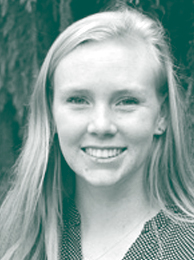 PROJECT
PROJECTAutomation of Annotation of Baited Remote Underwater Video Surveys
ORGANIZATION / LOCATIONBermuda Institute of Ocean Sciences- St. George's Bermuda
MENTOR(S)Tim Noyes, Research Specialist, Bermuda Institute of Ocean Sciences
SEE PRESENTATIONCertificate(s): Applications of Computing
I worked on implementing a machine learning program that would automate the annotation of the Baited Remote Underwater Video Surveys (BRUVS) that are used to measure the biodiversity of fish species on Bermuda’s reefs. The current method of annotating one hour of video takes up to 150 hours. With 200 videos left to annotate, automating this process could save a substantial amount of time and money. As the primary researcher, I was faced with many challenges and often had to find creative solutions to the issues that arose. I learned the importance of perseverance and flexibility because, as I saw, research can be turbulent. I had to be willing to go in completely new directions when necessary. I truly enjoyed working on the implementation of the program. The intersection between ecology, computer science and my experience made me extremely excited to major in ecology and evolutionary biology. I am grateful for the insight the internship gave me into the world of research and I look forward to exploring it.
-
Stahl, Maria ’20
Ecology and Evolutionary Biology
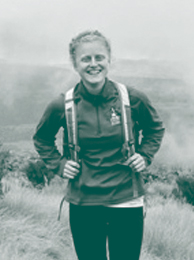 PROJECT
PROJECTUnderstanding Ant- Acacia Mutualism on a Molecular Level
ORGANIZATION / LOCATIONMpala Research Centre- Nanyuki, Kenya
MENTOR(S)Robert Pringle, Associate Professor of Ecology and Evolutionary Biology, Princeton University; Rebecca Kartzinel, Assistant Professor of Ecology and Evolutionary Biology, Brown University
SEE PRESENTATIONCertificate(s): Environmental Studies
I studied the mutualistic relationship between Acacia drepanolobium trees and several species of ants. Specifically, I looked at how the insects’ presence affects the acacias’ investment in molecular defense mechanisms against fungi. I collected samples of leaves from specific trees where ant activity had been monitored for five years. I compared the levels of chitinase (a fungal-defense enzyme) produced by the antoccupied trees to levels found in trees from which ants had been removed. The idea was that trees inhabited by ants invest less energy in fungal defense because the insects do most of the grunt work. I gained an appreciation for the complexity and elegance of the savanna ecosystem. It’s easy to forget the interconnectedness of the landscape, especially when species interact in ways invisible to the naked eye. The lab work was more extensive than anything I’d done before, which helped me develop good techniques to carry out protocols efficiently and accurately. The skills and knowledge I developed through this project will be extremely beneficial to me as I continue to study ecology and evolutionary biology and become more involved in conservation.
-
Stankovikj, Bozhidar ’20
Woodrow Wilson School
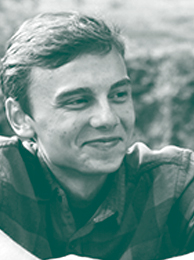 PROJECT
PROJECTPlant Traits and Animal Diet on the African Savanna
ORGANIZATION / LOCATIONPringle Lab, Department of Ecology and Evolutionary Biology, Princeton University-Gorongosa National Park, Mozambique
MENTOR(S)Robert Pringle, Associate Professor of Ecology and Evolutionary Biology; Arjun Potter, Ph.D. candidate, Ecology and Evolutionary Biology
SEE PRESENTATIONI helped investigate the relationship between plant traits and the dietary preferences of large mammal herbivores in Gorongosa National Park in Mozambique. Gorongosa itself was an incredible research location because of its unique history: it was the center of a 15-year civil war that nearly wiped out the large herbivorous species. Due to the work of the Gorongosa Restoration Project, we are now able to witness the recovery of an ecosystem in real time. My research group tried to explain why certain plants were over- or underrepresented in animal diets. We knew the diets because of previous work that used DNA metabarcoding of fecal samples to create a database of the plants each species eats. We collected more than 150 plant species. For each, we analyzed a list of more than 30 physical and chemical traits, such as branch architecture, height and specific leaf area, and protein/carbon/ nitrogen content. This helped us understand what plants are eaten and why.
-
Thiyageswaran , Vydhourie R.T. ’21
Operations Research and Financial Engineering
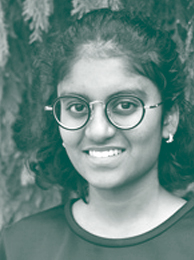 PROJECT
PROJECTDrivers of Variability in Exploited Marine Fish Populations: The Case of Atlantic Cod in the Gulf of Maine
ORGANIZATION / LOCATIONProgram in Atmospheric and Oceanic Sciences, Princeton University- Princeton, New Jersey
MENTOR(S)Jorge Sarmiento, George J. Magee Professor of Geoscience and Geological Engineering, Professor of Geosciences; Fernando González Taboada, Associate Research Scholar, Atmospheric and Oceanic Sciences
SEE PRESENTATIONMy research focused on the dynamics of Atlantic cod in the Gulf of Maine, which seem doomed to permanent population collapse. I studied how their abundance is affected by environmental and economic factors coupled with internal population dynamics and the fishing industry. I had the opportunity to access and analyze an array of data and improve my programming skills. I also gained familiarity with the Network Common Data Form (NetCDF) format, which is the standard system used by Earth System scientists to manage and interchange environmental information. I used bioeconomic models to study the effect of sea surface temperature on cod survival and explored how fluctuations in market prices influence harvest. I learned the importance of running simulations and how to turn interest in papers into hypotheses and further research. Working with my mentors gave me great insights into the scientific community and life as a researcher.
-
Zhang, Oliver ’21
Undeclared
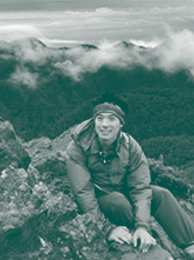 PROJECT
PROJECTA Single Bird: Studying the Behavior and Life of the Greater Ani
ORGANIZATION / LOCATIONRiehl Lab, Department of Ecology and Evolutionary Biology, Princeton University; Smithsonian Tropical Research Institute- Barro Colorado Island, Panama
MENTOR(S)Christina Riehl, Assistant Professor of Ecology and Evolutionary Biology; Amanda Savagian, Ph.D. candidate, Ecology and Evolutionary Biology; Meghan Strong, Research Specialist, Ecology and Evolutionary Biology
SEE PRESENTATIONI spent my summer at a small field site on the only inhabitable part of Barro Colorado Island in Panama with the Riehl Lab and scientists associated with the Smithsonian Tropical Research Institute (STRI). Prof. Riehl has been working on Barro Colorado Island for more than a decade studying the breeding and behavior patterns of a beautifully iridescent bird called the greater ani. Summers for the “Ani Team” are used for data collection. My days consisted of riding in a motorboat around a complex of Panama Canal peninsulas to locate ani nests and track their progress. I collected DNA from eggshell swabs and banded little peanut-looking ani chicks for future study. I’ve never been so surrounded by life as I was on Barro Colorado. It’s almost overwhelming to think of the many little critters scuttling around your feet, or the animal families living outside your door in the rainforest. Holding a baby ani in my palm helped me realize how fragile one life can be, which makes the abundance and diversity of life on Earth all the more wondrous.
-
Zhou, Elaine ’20
Ecology and Evolutionary Biology
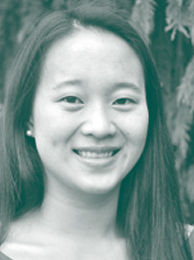 PROJECT
PROJECTLinking Biodiversity and Ecosystem Function in the Legume-Rhizobia Symbiosis
ORGANIZATION / LOCATIONHedin Lab, Department of Ecology and Evolutionary Biology, Princeton University- Panama City, Panama
MENTOR(S)Lars Hedin, George M. Moffett Professor of Biology, Professor of Ecology and Evolutionary Biology and the Princeton Environmental Institute; Trish Brandt, Ph.D. candidate, Ecology and Evolutionary Biology
I worked to understand the symbiotic relationship between legumes and rhizobia in diverse tropical forest ecosystems. The soils of Neotropical forests are known to be low in nutrients. Legumes are important because of their ability to fertilize forests and provide nutrients to the soil. I primarily worked in the lab sterilizing root nodules, performing DNA extractions and amplifying the DNA through polymerase chain reaction (PCR). I gained insight into practical lab skills and, in my free time, I was able to explore Panama, which exposed me to a different cultural experience outside of the lab. This internship prepared me for my senior independent research by allowing me to develop better lab and data analysis skills. I now have a better understanding of how research projects are developed and carried out.
- Climate Change and Environmental Science
-
Aranda Reina, Celia ’21
Civil and Environmental Engineering
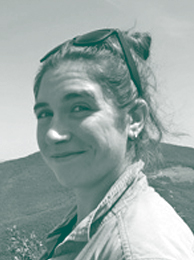 PROJECT
PROJECTHistory of Earth Climate in the Sedimentary Rock Record
ORGANIZATION / LOCATIONMaloof and Schoene Labs, Department of Geosciences, Princeton University- Gubbio, Italy; Zumaia and Sopelana, Spain; Princeton, New Jersey
MENTOR(S)Adam Maloof, Associate Professor of Geosciences; Blair Schoene, Associate Profess
SEE PRESENTATIONI worked primarily in Zumaia and Sopelana, Spain, studying the climate change record captured in periplatformal carbonates from the Paleogene Period. We measured layer types and thickness, and collected rock samples from each stratigraphic section. I prepared these rock samples for carbon- and oxygen-isotope measurements in the Maloof Lab by reducing the rocks to powder with a saw and dental drill, or with mortar and pestle. I dissolved the samples in acid and measured the carbon dioxide gas on an isotope-ratio mass spectrometer. With these data, we can see how environmental changes at the Cretaceous-Paleogene boundary may have influenced — or been influenced by — the demise of the dinosaurs and the rise of mammals. I also searched for periodicity in the layer thickness and isotope data to test the hypothesis that slight changes in Earth’s orbit paced the climate change that influenced carbonate deposition. I received intensive field training from two faculty members and two Ph.D. candidates. They taught me how to conduct geological work and gave me insight into graduate school life and academic research. I learned how to run different lab equipment and reduce data. Although my actual interest is environmental engineering, this experience enriched my understanding of paleoclimate science.
-
Bartusek, Sam ’20
Geosciences
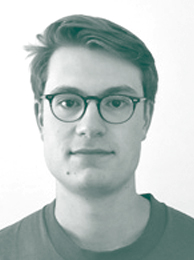 PROJECT
PROJECTAnalyzing the 2016/2017 Southern Ocean Heat Wave
ORGANIZATION / LOCATIONProgram in Atmospheric and Oceanic Sciences, Princeton University-Princeton, New Jersey
MENTOR(S)Jorge Sarmiento, George J. Magee Professor of Geoscience and Geological Engineering, Professor of Geosciences; Alexander Haumann, Postdoctoral Research Fellow, Atmospheric and Oceanic Sciences
SEE PRESENTATIONI worked at the Program in Atmospheric and Oceanic Sciences to analyze the Southern Ocean’s 2016/2017 heat wave, which stands in stark contrast to a decades-long cooling trend. Its magnitude is unprecedented since at least the early 1980s. I first analyzed sea-surface temperature data and profiling-float data from the Southern Ocean Carbon and Climate Observations and Modeling (SOCCOM) project to understand the magnitude of the event in the context of climate averages. I then conducted a heat and salinity budget analysis of the ocean’s near-surface waters to understand the progression of the event, examining where the heat anomaly came from and how it dissipated. I worked mostly on MATLAB, developing my programming skills and my capacity for problemsolving and resilience. The project helped me gain a greater understanding of, and appreciation for, the day-to-day progress of science in general and climate science in particular.
-
Basu, Udit ’20
Geosciences
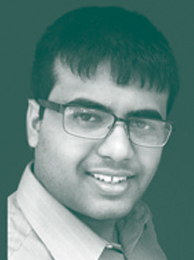 PROJECT
PROJECTUnderstanding Gas Exchange Through Sea Ice Using Biogeochemical Profiling Floats
ORGANIZATION / LOCATIONProgram in Atmospheric and Oceanic Sciences, Princeton University- Princeton, New Jersey
MENTOR(S)Jorge Sarmiento, George J. Magee Professor of Geoscience and Geological Engineering, Professor of Geosciences; Seth Bushinsky, Postdoctoral Research Associate, Atmospheric and Oceanic Sciences
SEE PRESENTATIONCertificate(s): East Asian Studies, Planets and Life
The goal of my project was to analyze new data from below the sea ice in the Southern Ocean to better understand the sea ice gas exchange between the ocean and the atmosphere. The data came from the Argo project, which has released nearly 4,000 floats worldwide that collect temperature and salinity characteristics of our oceans. We found that previously held models of how sea-ice gas exchange works needed revision as the model seemed to consistently deviate from observed data. Progress in the project was quite easy because of the smooth, consistent communication I had with my mentor in discussing the direction of the project and the results from the previous day. I learned a lot about oceanic sciences, as well as how to program in MATLAB, which is an invaluable skill in the sciences. This internship got me interested in continuing to study the ocean. I plan to use this project as the basis of my junior thesis and perhaps of similar projects for future theses.
-
Bisogno, Sofia ’20
Civil and Environmental Engineering
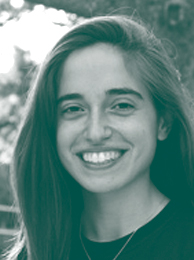 PROJECT
PROJECTMeasuring and Mapping Philadelphia’s Air Quality
ORGANIZATION / LOCATIONPrinceton Atmospheric Chemistry Experiment (PACE), Department of Civil and Environmental Engineering, Princeton University- Princeton, New Jersey; Philadelphia, Pennsylvania
MENTOR(S)Mark Zondlo, Associate Professor of Civil and Environmental Engineering; Dana Caulton, Assistant Professor of Atmospheric Science, University of Wyoming; Levi Golston, Ph.D. candidate, Civil and Environmental Engineering
SEE PRESENTATIONCertificate(s): Dance
I worked with a team of environmental engineers to develop and deploy a mobile lab for measuring air quality. The mobile lab is an electric car outfitted with six commercial and experimental sensors that measure carbon dioxide, methane, nitrous oxide, carbon monoxide, fine particulate matter (PM2.5), ammonia and meteorological data in real time. My internship focused on measuring and mapping air quality in Philadelphia. We worked with anthropological researchers studying former smelting sites in Philadelphia and their relationship to poor health. I was in charge of designing the mobile lab’s routes using geographic data the anthropologists provided. I also assisted in outfitting the lab and sampling the city by driving its streets, and using the collected data to map what was measured. In addition to developing my technical skills, my internship taught me what it means to be part of a research group and how thoughtful research is conducted. I now have a much better understanding of the role I want research to play in my career.
-
Callegari , Nicholas ’20
Mechanical and Aerospace Engineering
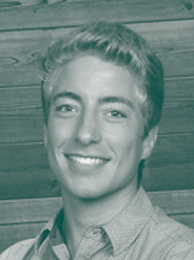 PROJECT
PROJECTUndergraduate Research Assistant, Surf Park Sustainability Standard
ORGANIZATION / LOCATIONCenter for Surf Research, San Diego State University-San Diego, California
MENTOR(S)Jess Ponting, Assistant Professor of Hospitality and Tourism Management, San Diego State University; Carl Kish, Program Coordinator of Center for Surf Research, San Diego State University
SEE PRESENTATIONCertificate(s): Entrepreneurship, Sustainable Energy
I helped develop a sustainability standard for surf parks, which are surfing destinations that rely on artificial ocean waves produced by wavegeneration technology. These large developments have a significant impact on local communities, environments and cultures. But surf parks are unregulated by most local governments. They are still relatively new and there is not yet any classification for these developments in terms of operation. I helped create a standard of more than 140 metrics for measuring the efficacy of sustainability management systems, surfresource conservation, and the quality and safety of experience-delivery at surf parks. Our metrics also would examine the social, economic, cultural, and environmental impacts of surf-park operations. Furthermore, I assisted in creating new metrics for analyzing the energy efficiency of surf parks, the aim of which were to set industrystandard benchmarks that would encourage future parks to consider sustainability. I plan to assist in future revisions of this standard and personally assess new surf-park developments.
-
Cavazos, Alexandra ’19
Chemical and Biological Engineering
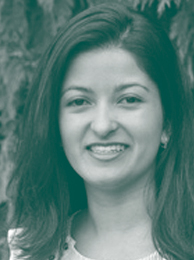 PROJECT
PROJECTUsing µCT to Characterize Desiccation of Clay-Quartz Slurries
ORGANIZATION / LOCATIONInterfacial Water Group, Department of Civil and Environmental Engineering, Princeton University- Princeton, New Jersey
MENTOR(S)Ian Bourg, Assistant Professor of Civil and Environmental Engineering and the Princeton Environmental Institute
Certificate(s): Sustainable Energy
I used micro-computed tomography (micro-CT) to visualize in 3D the desiccation — or extreme drying out — of water-saturated clay-quartz mixtures, which allows us to quantitatively characterize clay soils. The micro-CT images support research on the effect the clay content of rock has on its strength. Knowing this is crucial to developing effective plans for underground CO2 sequestration. Furthermore, the images may help predict the movement of environmental contaminants in soil and can be used to validate microfluidic simulations. I divided my time between drafting an experimental design, purifying clay in the laboratory, and using the micro-CT to scan samples. Now that I have uncovered the parameters that lead to highquality images, I am focusing on improving the experimental setup for clay desiccation. This work will form the basis of my senior thesis. This project afforded me the opportunity to conduct largely self-guided research, while allowing me to seek input from others in the lab and explore ways to connect my work to theirs.
-
Chen, Carmen ’21
Civil and Environmental Engineering
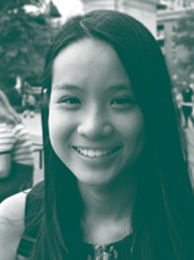 PROJECT
PROJECTNYC Pier 52/Day’s End Ecological History Research
ORGANIZATION / LOCATIONPrinceton University School of Architecture; Guy Nordenson and Associates- New York City, New York
MENTOR(S)Guy Nordenson, Professor of Architecture, Princeton University; Gina Morrow, Guy Nordenson and Associates
SEE PRESENTATIONCertificate(s): Architecture, Environmental Studies, Urban Studies
I worked in New York City on a project in collaboration with the Whitney Museum of American Art — based on a proposal by artist David Hammons — to construct a ghost-frame sculpture of Pier 52, which had existed adjacent to the site of the museum. I researched the history of the area — Manhattan’s West Village — by visiting archives at several libraries and city departments, and by reading articles and books from online databases. I found information tracing the neighborhood’s history through several time periods, beginning with indigenous settlement. I compiled this information into several booklets under different subcategories of history (e.g. maritime traffic history, market history, etc.). By the end of the internship, I learned an incredible amount about New York City’s history. I enjoyed working on an extended research project and learned how to access archives and information not readily available on the Internet. Working with my mentors at Guy Nordenson and Associates, as well as the staff at the Whitney Museum, allowed me to forge important relationships.
-
Chu, Chris ’19
Civil and Environmental Engineering
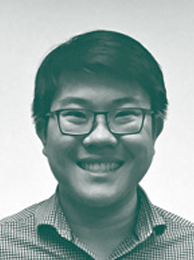 PROJECT
PROJECTClimate Central- Communicating Solutions to Climate Change
ORGANIZATION / LOCATIONPrinceton, New Jersey
MENTOR(S)Eric Larson, Senior Research Engineer, Andlinger Center for Energy and the Environment, Princeton University
SEE PRESENTATIONCertificate(s): Applications of Computing
I worked with Climate Central to develop a “wind-solar forecast tool” for its Climate Matters program. Climate Central is a non-profit organization dedicated to researching and reporting climate change and its impact on the public. The Climate Matters team produces content related to weather and climate for distribution to more than 500 TV meteorologists nationwide to use for on-air weather segments and other reporting. My project used weatherforecasting data to estimate solar- and windenergy generation in various regions. For the first version, my analysis was limited to designated market areas serviced by television stations. To build this application, I used Python, Django, PostgreSQL, and Amazon Web Services. This internship allowed me to tie my concentration in civil and environmental engineering to my certificate in Applications of Computing. I thoroughly enjoyed this experience, and I hope I will be able to find a career that allows me to continue to combine my academic interests.
-
Higashino, Soon Il ’20
Civil and Environmental Engineering
 PROJECT
PROJECTInvestigating the Effects of Cations and Salinity on Adsorption of Perfluorobutanesulfonic Acid onto Montmorillonite Clay
ORGANIZATION / LOCATIONInterfacial Water Group, Department of Civil and Environmental Engineering, Princeton University- Princeton, New Jersey
MENTOR(S)Ian Bourg, Assistant Professor of Civil and Environmental Engineering and the Princeton Environmental Institute
SEE PRESENTATIONPer- and polyfluoroalkyl substances (PFAS) are man-made compounds capable of persisting in the environment long after introduction. Adsorption onto minerals, such as montmorillonite clay, may potentially serve as an effective way to remove PFAS from water. I examined how cations and salinity influence the adsorption of perfluorobutanesulfonic acid onto montmorillonite clay. Three batch adsorption experiments tested NaCl solutions of .01 M and 1M, and a KCl solution of .1 M, at five concentrations (80 μL, 60μL, 40 μL, 20 μL, 10 μL), including blanks and standards, to determine the adsorption coefficient Kd. The Na-montmorillonite with .01 M salinity yielded a Kd value of 270 ± 73 L solution/kg (log Kd = 2.43 ± 1.86); Na-montmorillonite with 1 M salinity gave a Kd value of 156 ± 40 L solution/kg (log Kd = 2.19 ± 1.60); and K-montmorillonite with .1 M salinity gave a Kd value of 1016 ± 55 L solution/kg (log Kd = 3.01 ± 1.73). This suggests that increasing salinity leads to a decrease in adsorption of PFBS onto Na-saturated smectite, and of the cations Na, Ca, and K, the presence of K led to an increase in adsorption.
-
Irigoyen-López, Teresa ’19
Mechanical and Aerospace Engineering
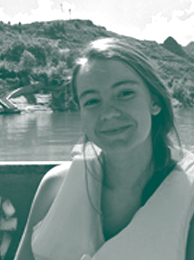 PROJECT
PROJECTUnderstanding China’s Sustainability Efforts in New Development Plans
ORGANIZATION / LOCATIONNatural Resources Defense Council-Beijing, China
MENTOR(S)Alvin Lin, Climate and Energy Policy Director, China Program, Natural Resources Defense Council; Hua Ning, Policy Analyst, Land and Wildlife Team, Natural Resources Defense Council
SEE PRESENTATIONCertificate(s): East Asian Studies, Robotics and Intelligent Systems, Sustainable Energy
I worked at the Natural Resources Defense Council (NRDC) Beijing Representative Office as a research intern for the Climate and Energy team. I conducted research on clean-energy initiatives in China, and produced reports on the global impact of the Paris Agreement as part of NRDC’s oil-cap and coal-cap projects. I also researched national parks policy in Argentina and Brazil for an important project on national parks legislation. My work was presented at an international symposium hosted by the regional government and it will be used by the NRDC to advise Chinese national parks policy. My experience taught me a lot about environmental issues and the efforts China is making to solve these, and it exposed me to how NGOs, the government and other stakeholders work in China. I used a lot of my knowledge in engineering and climate policy, and performed translation work in Spanish, Portuguese, German, English and Mandarin. My internship renewed my interest in environmental work and renewableenergy projects; I hope to focus my independent work on wind energy in China. This summer also made me more excited to continue my studies at the graduate level.
-
Juechser, Elisabeth ’20
Chemical and Biological Engineering
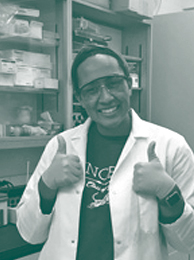 PROJECT
PROJECTPhytoplankton Growth Rate Measured by DNA Sequence Analysis
ORGANIZATION / LOCATIONWard Lab, Department of Geosciences, Princeton University-Princeton, New Jersey
MENTOR(S)Bess Ward, William J. Sinclair Professor of Geosciences and the Princeton Environmental Institute
SEE PRESENTATIONCertificate(s): Applications of Computing, Engineering Biology
I had the opportunity to perform research on a novel DNA-based method for determining growth rates in cultures of the marine bacteria Synechococcus. Cyanobacteria such as Synechococcus are essential contributors to oceanic production. Determining the amount of carbon fixation these bacteria are responsible for, however, requires knowing strain-specific growth rates. We used DNA sequence analysis to validate a method called iRep (index of replication) that would eliminate the need for laboratory incubations to obtain growth-rate data. Most of my summer was spent growing and sampling bacterial cultures and extracting their DNA for sequencing. I compared the DNA sequences to cell counts and size data I gathered using flow cytometry, wherein cells pass one at a time through a laser beam to determine their characteristics. I later analyzed the sequencing results from some of the DNA samples I had extracted and helped the lab process the data necessary for more in-depth analysis. This summer introduced me to research in both a wet lab and dry lab, and it solidified my intention to attend graduate school.
-
Kar, Nabhonil ’20
Operations Research and Financial Engineering
 PROJECT
PROJECTAn Application of Machine Learning to Computational Environmental Science
ORGANIZATION / LOCATIONEarth and Space Sciences Research Group, Department of Environmental Sciences and Biochemistry, University of Castilla-La Mancha-Toledo, Spain
MENTOR(S)Francisco J. Tapiador, Dean of Environmental Sciences and Biochemistry, University of Castilla-La Mancha Certificate(s): Applications of Computing, Spanish Language and Culture, Statistics and Machine Learning
Certificate(s): Applications of Computing, Spanish Language and Culture, Statistics and Machine Learning
I implemented machine learning algorithms for the Earth and Space Sciences Research Group at the University of Castilla-La Mancha in Spain for application in computational environmental science. Specialized methods are required to analyze the vast amounts of data produced in disciplines such as climatology, meteorology and atmospheric science. My task was to write an artificial neural network (ANN) to allow the lab to make sense of their large data sets. Practical uses of the ANN include predicting future climates based on historical data; estimating surface-level and atmospheric temperatures based on satellite images; and, more generally, finding non-linear relationships between environmental variables. The project was an elegant application of my theoretical understanding of various branches of mathematical and computer science. Other minor projects for the summer included helping to write research papers in English and assisting Professor Tapiador with his upcoming book on the physics of environmental science.
-
Quach , Lilly ’19
Ecology and Evolutionary Biology
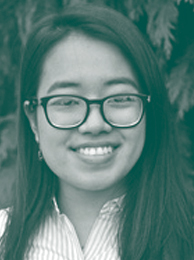 PROJECT
PROJECTInvestigation of the Dominant Seasonal Effects on the Flux of pCO2 in the Southern Ocean
ORGANIZATION / LOCATIONProgram in Atmospheric and Oceanic Sciences, Princeton University- Princeton, New Jersey
MENTOR(S)Jorge Sarmiento, George J. Magee Professor of Geoscience and Geological Engineering, Professor of Geosciences; Lionel Arteaga, Postdoctoral Research Associate, Atmospheric and Oceanic Sciences Certificate(s): Environmental Studies
SEE PRESENTATIONCertificate(s): Environmental Studies
I investigated the biological mechanisms behind carbon flux in the Southern Ocean. This has important implications for climate change because the Southern Ocean is a major carbon sink. For my research, I analyzed satellite data of how seasonal temperatures affect carbon-storing phytoplankton. I coded programs to analyze the levels of pCO2 (partial pressure of carbon dioxide) at different depths and to examine phytoplankton biomass trends over time. I used phytoplankton biomass as a proxy for measuring biological carbon uptake. I found that only a part of the Southern Ocean was indeed biologically driven. This internship allowed me to explore a different avenue of climate science than my usual courses at Princeton, and I have a better understanding of how marine biogeochemistry processes are involved in carbon storage. In particular, the ability to look at large datasets and determine the significance of the interacting terms will be helpful in my future as a scientific scholar.
-
Underwood, Nye ’20
Civil and Environmental Engineering
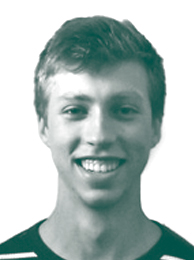 PROJECT
PROJECTMineral-Organic Interactions in Soil
ORGANIZATION / LOCATIONInterfacial Water Group, Department of Civil and Environmental Engineering, Princeton University- Princeton, New Jersey
MENTOR(S)Ian Bourg, Assistant Professor of Civil and Environmental Engineering and the Princeton Environmental Institute; Thomas Underwood, Postdoctoral Research Associate, Civil and Environmental Engineering
SEE PRESENTATIONI worked on writing a discrete element method (DEM) program in Python that can simulate the physical interactions of clay and sand particles while keeping track of water-transfer interactions between clay particles. By creating our own DEM, our goal was to look at how clay and sand interact with water at the particle level. We wanted to have the tools necessary to see how adding and removing water, adjusting clay-sand ratios, and changing the boundary conditions would affect the system. I was able to get the code to a point where the particles were responding correctly to physical interactions, and a preliminary water transfer has been implemented. As I continue with the Interfacial Water Group for my independent project, I will fine-tune the watertransfer parameters and implement particlewater forces. In the end, the group should have all the tools necessary for better understanding clay-sand interactions at water interfaces.
-
Underwood, Ona ’21
Geosciences
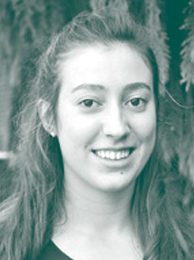 PROJECT
PROJECTHistory of Earth Climate in the Sedimentary Rock Record
ORGANIZATION / LOCATIONMaloof and Schoene Labs, Department of Geosciences, Princeton University- Gubbio, Italy; Zumaia and Sopelana, Spain; Princeton, New Jersey
MENTOR(S)Adam Maloof, Associate Professor of Geosciences; Blair Schoene, Associate Professor of Geosciences
SEE PRESENTATIONI investigated the series of events responsible for the last great extinction, which wiped out the dinosaurs about 66 million years ago. A large meteor impact in Mexico is the prevailing explanation for this extinction. We worked to develop a more precise timeline of these events and considered the role volcanism also may have played. We tested sedimentary rocks thought to span this time period for mercury and magnetic susceptibility. We saw some spikes in mercury levels, which may be evidence of the volcanism that occurred in India’s Deccan Traps during the end of the Cretaceous Period. Variability in magnetic susceptibility — whether an object is attracted to or repelled by a magnetic field — can be used as a proxy for the local hydrological cycle. If the local water cycle is governed by periodic wobbles in Earth’s orbit, those cycles may be used to refine the extinction timescale. Understanding the causes, consequences and timing of this climate catastrophe will ultimately help us understand — and make predictions about — human-made climate change and its impacts on civilization.
-
Wiggins, Wesley ’21
Geosciences
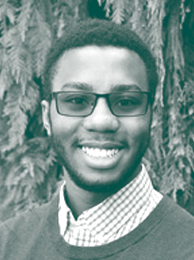 PROJECT
PROJECTProtein Nanocompartments in Anammox Bacteria
ORGANIZATION / LOCATIONWard Lab, Department of Geosciences, Princeton University-Princeton, New Jersey
MENTOR(S)Bess Ward, William J. Sinclair Professor of Geosciences and the Princeton Environmental Institute
SEE PRESENTATIONCertificate(s): Environmental Studies
I worked in the Ward Lab, which focuses mainly on the ocean nitrogen cycle. My project focused on using genetic techniques to identify nanocompartments in the marine bacteria that perform anaerobic ammonium oxidation (anammox). Anammox is responsible for 29 percent of the release of ocean nitrogen in the form of dinitrogen gas. The process that makes up the other 71 percent is denitrification, and both processes mainly occur in oxygen minimum zones. Encapsulin nanocompartments are theoretical cage-like organelles that protect the cell from dangerous chemical intermediates formed during anammox reactions, such as hydrazine and nitrogen monoxide. During the summer, I learned valuable lab procedures including DNA extraction, RNase treatment, E. coli culturing, and polymerase chain reaction (PCR). I also learned valuable scientific problemsolving skills, gained general lab experience, and started identifying career goals involving research and science communication.
- Urban Adaptation and Resiliency
-
Cory, Annie ’20
Woodrow Wilson School
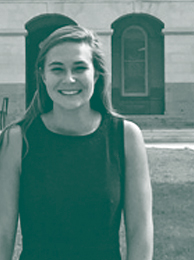 PROJECT
PROJECTDeveloping a Vision for a Clean-Energy Future
ORGANIZATION / LOCATIONEnvironmental Defense Fund (EDF)-Los Angeles, California
MENTOR(S)Timothy O’Connor, Director of California Oil and Gas Program, EDF; Irene Burga, Manager, California Climate and Energy, EDF
SEE PRESENTATIONI interned at the Environmental Defense Fund (EDF) in Los Angeles. While EDF has many environmental goals, the Los Angeles team is primarily focused on limiting pollution from oil and gas wells and paving a policy pathway forward for a clean-energy future in California. My primary roles included researching and authoring policy-position papers, attending workshops on clean-energy legislation and lobbying in Sacramento. During my time at EDF, the group’s focus turned toward a more integrated approach to clean energy and I was integral in providing preliminary research on the clean-energy landscape in California. I developed skills such as communicating with a disperse team effectively, writing concise and opinionated papers and reading complicated legal documents — all of which I will use in future jobs. The basic understanding of the policy world I gained will propel me forward in my academic study in the Woodrow Wilson School.
-
Jin, Yolanda ’20
Civil and Environmental Engineering
 PROJECT
PROJECTCoastal Resiliency and Climate Adaptation in Jamaica Bay
ORGANIZATION / LOCATIONPrinceton University School of Architecture; Guy Nordenson and Associates- New York, New York
MENTOR(S)Guy Nordenson, Professor of Architecture, Princeton University; Paul Lewis, Professor of Architecture, Princeton University; Rennie Jones, Research Specialist, Architecture
Certificate(s): Architecture and Engineering, Urban Studies
I worked on a proposal to build barriers against storm surges and tidal flooding along Long Island’s Jamaica Bay. My responsibilities were to produce a series of drawings that visualized what the bayside neighborhood of Bayswater, Queens, would look like if the barriers are implemented. I created aerial views of the neighborhood and of a single block in the years 1925, 2025, 2050 and 2100 in order to show how2 everyday life could be affected. These images provided a substantial portion of the visual materials for a report on the project that will be used to secure investment for the construction of these barriers. This internship gave me the opportunity to more efficiently exercise my design abilities and my skills with software such as Rhinoceros and Adobe Illustrator. More importantly, it offered me the chance to exercise my communication, collaboration and organization skills by working as part of a design team.
-
Lucey, Morgan ’19
Neuroscience
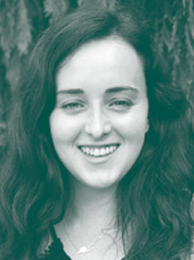 PROJECT
PROJECTEnvironmental Exposure and Child Development: Evidence from the Krogman Growth Study
ORGANIZATION / LOCATIONEthnographic Visualization Lab, Department of Anthropology, Princeton University-Princeton, New Jersey
MENTOR(S)Carolyn Rouse, Professor of Anthropology; Jeffrey Himpele, Director, Ethnographic Data Visualization Lab, and Lecturer, Anthropology
SEE PRESENTATIONCertificate(s): Gender and Sexuality Studies
I contributed to several projects with the Ethnographic Visualization Lab as they continued work on the Krogman Growth Study. This study exams environmental changes in Philadelphia from the 1940s-1970s and how they affected human growth and development in four separate neighborhoods. My work involved using the mapping and geographic information software ArcGIS to indicate sites of environmental contamination; creating visualizations of highway, hospital and university construction and development; and finding relevant data in various archives. I gained a lot of new skills in data analysis and visualization, as well as in archival research, which will be integral to developing my senior thesis. I also plan to attend law school. By finding connections between environmental changes and litigation, my work this summer showed me how important legal studies can be in environmental activism.
-
Marsh, Anna ’20
Architecture
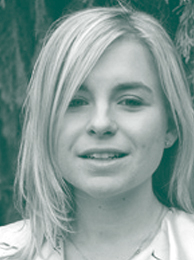 PROJECT
PROJECTNYC Pier 52/Day’s End Ecological History Research
ORGANIZATION / LOCATIONPrinceton University School of Architecture; Guy Nordenson and Associates- New York City, New York
MENTOR(S)Guy Nordenson, Professor of Architecture, Princeton University; Gina Morrow, Guy Nordenson and Associates Certificate(s): Latin American Studies, Urban Studies
SEE PRESENTATIONCertificate(s): Latin American Studies, Urban Studies
I worked on a project in collaboration with the Whitney Museum of American Art to build a ghost frame replica of the demolished Pier 52. “Day’s End” pays homage to the pier’s cultural importance and the area’s maritime and industrial history. The Whitney Museum is working with Guy Nordenson and Associates to design and engineer the structure, as well as help gather information and archival materials for the exhibition. I spent the summer reading online articles and digging through archives to find information on, and visuals of, the piers along the Hudson River and the industries they served. I also researched the history of the neighborhood prior to the development of maritime traffic and the construction of piers in order to contextualize the site. My co-intern and I produced eight booklets that covered different historical and cultural topics that the Whitney will reference as they curate the exhibition. This exhibition might include information I gathered about Irish longshoremen who congregated in Greenwich Village and worked the piers, or the Native Americans who were the first inhabitants of Manhattan’s Gansevoort peninsula.
-
Mathieu, Traci ’20
Computer Science
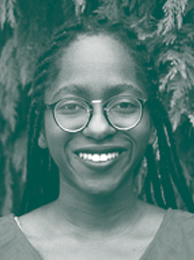 PROJECT
PROJECTVisualizing Air Quality in Augmented Reality (AR)
ORGANIZATION / LOCATIONEnvironmental Fluid Mechanics Research Group, Department of Civil and Environmental Engineering, Princeton University- Princeton, New Jersey
MENTOR(S)Elie Bou-Zeid, Professor of Civil and Environmental Engineering; Maider Llaguno Municha, Postdoctoral Research Associate, Civil and Environmental Engineering
I worked on two iOS mobile applications that use augmented reality (AR) to display air-quality data overtop a user’s surrounding environment as viewed through their device. The first app displays air-quality data for street intersections near the user, while the second adds a 3D city model and visualized data to the AR view. The user can interact with the model and data to gain a better understanding of how air-quality varies within a specific area. I also worked on a web application that displays air-quality data on Google Maps based on the user’s location. After 10 weeks, I went from from knowing nothing about mobile-app development to having developed two prototypes. Not only did I gain an array of new skills, I also had the wonderful opportunity to develop strong relationships with my mentors. This experience solidified my desire to continue conducting research with the Environmental Fluid Mechanics Research Group and, ultimately, pursue a career in the technology sector.
-
Ogoke, Francis ’19
Chemical and Biological Engineering
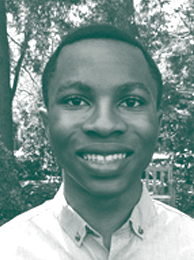 PROJECT
PROJECTOil Spill by Raindrop Fall
ORGANIZATION / LOCATIONDeike Lab, Department of Mechanical and Aerospace Engineering, Princeton University- Princeton, New Jersey
MENTOR(S)Luc Deike, Assistant Professor of Mechanical and Aerospace Engineering and the Princeton Environmental Institute
SEE PRESENTATIONCertificate(s): Applications of Computing
I studied the dynamics of droplet impact on liquid surfaces, specifically on water coated with a layer of crude oil. When raindrops impact the surface of an oil slick, tiny droplets are ejected from both the water and oil layers. These droplets are toxic to wildlife and can influence atmospheric cycles. To investigate this effect, I simulated droplet impact on oil slicks under various conditions using Basilisk, an opensource computational fluid dynamics software package. During this internship, I gained an appreciation for the power of numerical modeling to investigate problems that are difficult to recreate experimentally. I also developed my programming and data analysis skills. I not only learned new programming languages, but I also applied them in unanticipated ways. The work I did will heavily influence my senior thesis, for which I will explore other key phenomena associated with droplet impact in greater detail.
-
Peterson, Kimberly ’19
Geosciences
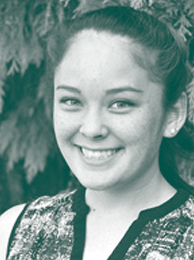 PROJECT
PROJECTHurricane Storm-Surge and Wave Modeling Visualization
ORGANIZATION / LOCATIONHurricane Hazards and Risk Analysis Research Group, Department of Civil and Environmental Engineering, Princeton University-Princeton, New Jersey
MENTOR(S)Ning Lin, Associate Professor of Civil and Environmental Engineering; Reza Marsooli, Associate Research Scholar, Civil and Environmental Engineering
Certificate(s): Environmental Studies
I worked on developing a tool that visualizes hurricane storm surges and waves. This tool would automatically extract data from the National Hurricane Center’s hurricane advisories (either past or present) and input them into a model that predicts the severity of the storm surge along a coastline, primarily the Atlantic coast. This tool would streamline the group’s study of hurricane hazards and risk analysis by condensing the code and time needed to extract data, input them into the model, and generate a visualization. Through this experience, I learned about the inner workings of cluster computers and how to read the programming language Bash. I also gained confidence in my own coding abilities. When a path I explored in the first half of the project did not pan out, I wrote another code which was more successful. I hope to apply my experience and newfound confidence in navigating the research process to my senior thesis and beyond.
-
Qin, Anna ’21
Computer Science
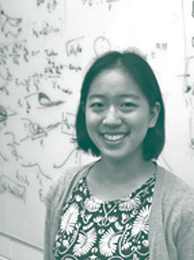 PROJECT
PROJECTBreaking Waves on Coastal Structures
ORGANIZATION / LOCATIONDeike Lab, Department of Mechanical and Aerospace Engineering, Princeton University- Princeton, New Jersey
MENTOR(S)Luc Deike, Assistant Professor of Mechanical and Aerospace Engineering and the Princeton Environmental Institute
SEE PRESENTATIONI used the open-source “solver” mathematical software Basilisk C to create numerical simulations of how waves break against walls. These simulations could help further understand how waves impact coastal structures, which would lead to improved and more resilient structural designs for coastal areas. I designed and refined the simulation programs by investigating the initial conditions and parameters that gave appropriate results. I ensured that workable data were outputted before running the simulations and processing the results. After creating a simulation to produce regular sine, or oscillating, waves with the properties of water under air, I used dispersive focusing to create simulated waves that broke at a specified time and location. Then I inserted an arbitrary wall and observed the behavior of the wave on impact. Through this project, I learned how to use the software tools for creating such simulations. Thanks to this experience, I became more comfortable solving problems independently, I gained a greater appreciation for the research process, and I reaffirmed my interest in applying computer science to scientific problems.
-
Scott-Young, Ellen ’20
Anthropology
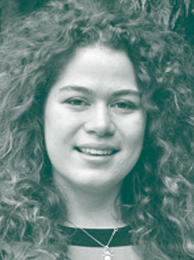 PROJECT
PROJECTProductivity- Susceptibility Analysis in Yellow Sea of China
ORGANIZATION / LOCATIONEnvironmental Defense Fund- Boston, Massachusetts
MENTOR(S)Jake Kritzer, Senior Director, China Fisheries, Environmental Defense Fund; Robert Boenish, High Meadows Postdoctoral Fellow, Environmental Defense Fund
SEE PRESENTATIONCertificate(s): Environmental Studies, German
My small team and I conducted a risk assessment called a productivity susceptibility analysis (PSA) on selected fish species in the Yellow Sea of China. The PSA generates a vulnerability score that helps determine the most effective strategy for sustainably fishing local stocks. We developed our own set of proxies and factors for the analysis by reviewing previous PSAs and through brainstorming sessions. I presented ideas during these sessions that were incorporated into the final project. I also created a PSA Excel spreadsheet that cohesively arranged data so they could be exported into R software for statistical analyses. My skills in Excel are now highly developed and I conducted extensive literature reviews to gather information and data for the Yellow Sea region. My time at the Environmental Defense Fund was very rewarding. I will be looking toward working in the environmental sector again, but perhaps in a different capacity.
-
Shi, Yunzi ’20
Architecture
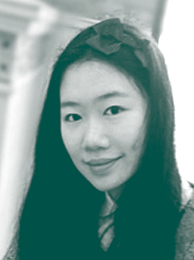 PROJECT
PROJECTUrban Waste Management with Metropolitan Waterway Network
ORGANIZATION / LOCATIONFluvial Metropolis Group, Princeton University School of Architecture and the Department of Architecture and Urbanism, University of São Paulo- São Paulo, Brazil
MENTOR(S)Mario Gandelsonas, Class of 1913 Lecturer in Architecture, Professor of Architecture, Princeton University; Alexandre Delijaicov, Professor of Architecture and Urbanism, University of São Paulo
SEE PRESENTATIONCertificate(s): Applications of Computing, Urban Studies, Visual Arts
I worked in collaboration with the Fluvial Metropolis Research Group (GMF) in the University of São Paulo’s Department of Architecture and Urbanism (FAU-USP). GMF proposes to use the waterway ring network surrounding São Paulo as a solution to urban pollution, public transportation and waste management. The São Paulo metropolitan area provided valuable context for my research project, which involved designing architectural units for urban waste management at different scales and proposing ways to incorporate them. The project was developed alongside the researchers in the group — more than 20 undergraduate and graduate students at FAUUSP and our mentors. Besides working on my project, I went on field trips to study urban infrastructure and the waterways, conducted interviews with waste collectors, sat in on a hearing at the state department of logistics and transport, and attended thesis reviews and departmental examinations at FAU-USP. The experience reinforced my passion for using public-infrastructure design and architecture as an intervention for urban challenges.
-
Zeiset, Reuben ’19
Architecture
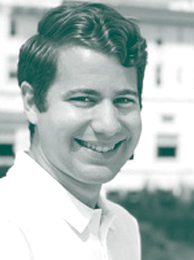 PROJECT
PROJECTCoastal Resiliency and Climate Adaptation in Jamaica Bay
ORGANIZATION / LOCATIONPrinceton University School of Architecture; Guy Nordenson and Associates- New York, New York
MENTOR(S)Guy Nordenson, Professor of Architecture, Princeton University; Paul Lewis, Professor of Architecture, Princeton University; Rennie Jones, Research Specialist, Architecture, Princeton University
I worked designing representational graphics for the Jamaica Bay Resiliency Project, and was responsible for depicting the hamlet of Woodmere, New York. This area borders Jamaica Bay and during the past 100 years has developed from marshland into a suburb containing large amounts of infrastructure serving nearby Kennedy Airport. According to climate modeling by Princeton researchers, this area will be affected by flooding in the coming decades due to rising sea levels and the increased severity of storms caused by climate change. Guy Nordenson and Associates has designed a two-barrier system to protect the area from storm surges and tidal flooding, while also allowing the area’s marsh to flourish again. I made a 3D software model of the neighborhood to depict these proposed changes and the projected appearance of the local infrastructure and landscape through 2100. I used Adobe software to graphically represent the changes and create a set of 20 diagrammatic and pictorial drawings to represent the area as sea levels rise and the GNA plan is implemented. This internship allowed me to exercise my graphic design skills and encouraged me to continue pursuing a career as an architect.
- Water and Health
-
Bechtold, Alexander ’20
Chemical and Biological Engineering






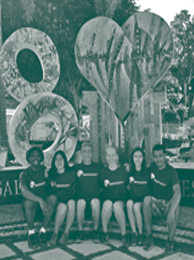 PROJECT
PROJECTPotable-Water System Implementation for El Cajuil
ORGANIZATION / LOCATIONEngineers Without Borders (EWB), Princeton Chapter, Dominican Republic- El Cajuil, Dominican Republic
MENTOR(S)Peter Jaffe, William L. Knapp ’47 Professor of Civil Engineering, Professor of Civil and Environmental Engineering, Princeton University; Nolan Perreira, Responsible Engineer in Charge, EWB
SEE PRESENTATIONProject: Potable-Water System Implementation for El Cajuil
Location: El Cajuil, Dominican Republic
Organization: Engineers Without Borders (EWB), Princeton Chapter, Dominican Republic
Mentor(s): Peter Jaffe, William L. Knapp ’47 Professor of Civil Engineering, Professor of Civil and Environmental Engineering, Princeton University; Nolan Perreira, Responsible Engineer in Charge, EWBFor phase two of our project, we installed a chlorination and filtration system to purify the water going into the main storage tank. Automatic air-release valves were installed along critical points in the line to release trapped air and increase flow throughout the system. Water meters were added at critical sections of the pipeline to assess water usage. Float valves were repaired and reinstalled in the main storage tank to prevent overflow due to excess water coming in from the source. A proposed looped section of pipeline for an area where the community is expanding residentially was surveyed. This looped section would allow for more water pressure and equal water distribution throughout the system. All the piping and critical sections of the pipeline were purchased and delivered to the community, including the tie-in near the tank, the tie-in at the bottom of the community, and a bridge spanning a 100-foot gorge.
-
Bisogno , Sofia ’20
Civil and Environmental Engineering





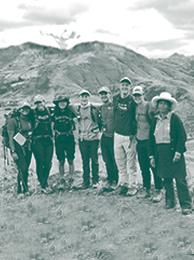 PROJECT
PROJECTPotable Water for Pusunchás
ORGANIZATION / LOCATIONEngineers Without Borders (EWB), Princeton Chapter, Peru- Otuzco, Peru
MENTOR(S)Peter Jaffe, William L. Knapp ’47 Professor of Civil Engineering, Professor of Civil and Environmental Engineering, Princeton University; Don Moris, Technical Mentor, EWB; Russell Turner, Responsible Engineer in Charge, EWB
SEE PRESENTATIONCertificate(s): Dance
Our team works to provide potable water to the 65 families of Pusunchás, a rural community in the foothills of the Peruvian Andes. Using data collected from our assessment trip in 2016, we had designed a gravity-fed water system consisting of 18 kilometers of pipeline, a 12,000-liter reservoir tank, pressure breaks, and tap stands. This summer, we continued the implementation of our project. With help from our in-country partners, we were able to install more than six kilometers of pipeline, six pressure breaks and 44 tap stands. This work connected more than 220 additional community members to clean drinking water for the first time in 25 years. Leading a team of community members, construction masons, and NGO partners in pursuit of a common goal gave us the opportunity to apply the technical and leadership skills we learned at Princeton to the real world. Working with EWB shaped our understanding of what applied engineering in pursuit of advancing human rights can look like, and inspired us to incorporate this into our career goals.
-
Callegari, Nicholas ’20
Mechanical and Aerospace Engineering






 PROJECT
PROJECTPotable-Water System Implementation for El Cajuil
ORGANIZATION / LOCATIONEngineers Without Borders (EWB), Princeton Chapter, Dominican Republic- El Cajuil, Dominican Republic
MENTOR(S)Peter Jaffe, William L. Knapp ’47 Professor of Civil Engineering, Professor of Civil and Environmental Engineering, Princeton University; Nolan Perreira, Responsible Engineer in Charge, EWB
SEE PRESENTATIONCertificate(s): Entrepreneurship, Sustainable Energy
For phase two of our project, we installed a chlorination and filtration system to purify the water going into the main storage tank. Automatic air-release valves were installed along critical points in the line to release trapped air and increase flow throughout the system. Water meters were added at critical sections of the pipeline to assess water usage. Float valves were repaired and reinstalled in the main storage tank to prevent overflow due to excess water coming in from the source. A proposed looped section of pipeline for an area where the community is expanding residentially was surveyed. This looped section would allow for more water pressure and equal water distribution throughout the system. All the piping and critical sections of the pipeline were purchased and delivered to the community, including the tie-in near the tank, the tie-in at the bottom of the community, and a bridge spanning a 100-foot gorge.
-
Chai, Samantha ’19
Woodrow Wilson School
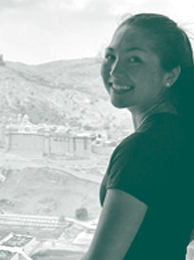 PROJECT
PROJECTThe Impact of Campaign Mode Vaccination on Routine Immunization in India
ORGANIZATION / LOCATIONThe Center for Disease Dynamics, Economics, and Policy (CDDEP)- New Delhi, India
MENTOR(S)Ramanan Laxminarayan, Senior Research Scholar, Princeton Environmental Institute
SEE PRESENTATIONCertificate(s): Global Health and Health Policy
I collaborated on three projects in India related to antimicrobial resistance (AMR), which is a growing concern there. I got to work alongside leading health-policy experts at CDDEP and I participated in a meeting at the regional World Health Organization office about a paper they commissioned on AMR and primary health care. I also attended a conference about addressing AMR in an effort to reduce neonatal and child mortality. My second summer living in India also presented unplanned field experiences such as watching an airport pharmacist offer to prescribe antibiotics to someone who only wanted Benadryl. With the help of CDDEP’s director, who is my thesis adviser, I explored a measure on the pre-infection front of AMR for my thesis: vaccination. Vaccines would reduce India’s occurrence of infectious diseases, which are fueling antibiotic misuse and AMR. For my research, I interviewed five stakeholders on whether the polio-eradication campaign in India hindered routine immunization, and I visited a government-sponsored maternal and childhealth immunization session.
-
Cook, Clare ’20
Electrical Engineering



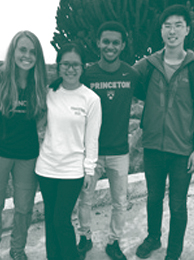 PROJECT
PROJECTPotable-Water System for Kiburanga and Kubweye
ORGANIZATION / LOCATIONEngineers Without Borders (EWB), Princeton Chapter, Kenya- Isebania, Migori County, Kenya
MENTOR(S)Peter Jaffe, William L. Knapp ’47 Professor of Civil Engineering, Professor of Civil and Environmental Engineering, Princeton University; Mahiri Mwita, Lecturer in Princeton Institute for International and Regional Studies
SEE PRESENTATIONCertificate(s): Chinese Language and Culture
Princeton EWB Kenya has been working in the Kuria West district of southwest Kenya since 2013. The team has designed and implemented three rainwater catchment systems in the communities of Komosoko and Muchebe. This year, in addition to monitoring the success of the past projects, we implemented borehole wells and handpumps at Kubweye Primary School and Kiburanga Primary School. We learned from community surveys that families in the area frequently wait in long lines for water, especially during the dry season. They often resort to drinking untreated river water, which leads to typhoid outbreaks. We were excited to hit enough water at both well sites to sustain the students and faculty at the primary schools and provide water for the surrounding community. The team also encouraged the election of, and held trainings for, water committees at both schools that will handle the operation, maintenance and finances for the boreholes. We handed over ownership and responsibility for the boreholes to the water committees, and we are confident that these dedicated people will ensure the boreholes can serve the schools for many years.
-
Delnoce, Krystal ’21
Civil and Environmental Engineering
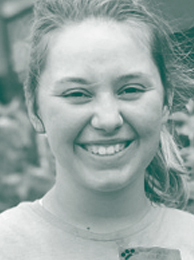 PROJECT
PROJECTJacob’s Creek and Assunpink Watershed Studies
ORGANIZATION / LOCATIONThe Watershed Insitute- Pennington, New Jersey
MENTOR(S)Steve Tuorto, Director of Science and Stewardship, The Watershed Institute; Erin Stretz, Assistant Director of Science and Stewardship, The Watershed Institute
SEE PRESENTATIONI worked on the Jacob’s Creek/Urban Watershed Study at The Watershed Institute, which is an organization dedicated to the protection of clean healthy water. The study’s goal is to measure and analyze the impact of land usage on water quality. I learned how to use various geographic information systems (GIS) to map land usage around streams. Then, I chemically and biologically monitored streams using various tests. I also was encouraged to help with outreach and I learned to communicate my work to the surrounding community. I was able to educate others about people’s impact on the environment and encourage people to become more environmentally conscious. This internship provided new insight on how a sustainable infrastructure can relieve the strain we put on our watersheds. My time at the Watershed Institute inspired me, as a civil and environmental engineering major, to pursue the design of cityscapes that reduce our impact on the natural environment.
-
Guan, Olivia ’21
Molecular Biology
 PROJECT
PROJECTAbiotic Hydrogen-Gas Production from Butyl Rubber Stoppers
ORGANIZATION / LOCATIONOnstott Lab, Department of Geosciences, Princeton University- Princeton, New Jersey
MENTOR(S)Tullis Onstott, Professor of Geosciences; Rachel Harris, Ph.D. candidate, Geosciences
SEE PRESENTATIONI worked in the Onstott Lab researching abiotic hydrogen production in glass bottles with butyl rubber stoppers. Butyl rubber stoppers create gas-tight seals and are thus commonly used in experiments. It would affect the results of many experiments if these stoppers were found to create background gases and reactions. I learned how to use techniques such as gas chromatography (GC) and cavity ring-down spectroscopy to measure methane levels in the vials. The gas chromatograph I used contained a reducing compound photometer (RCP) and flame ionization detector (FID) for measuring hydrogen concentrations. I got to work with faculty and graduate students on the FID’s internal mechanisms. Working in the department was a great opportunity to learn about using different machines, as well as experience the roles and responsibilities of being a researcher.
-
Heubner, Camille ’20
Civil and Environmental Engineering





 PROJECT
PROJECTPotable Water for Pusunchás
ORGANIZATION / LOCATIONEngineers Without Borders (EWB), Princeton Chapter, Peru- Otuzco, Peru
MENTOR(S)Peter Jaffe, William L. Knapp ’47 Professor of Civil Engineering, Professor of Civil and Environmental Engineering, Princeton University; Don Moris, Technical Mentor, EWB; Russell Turner, Responsible Engineer in Charge, EWB
SEE PRESENTATIONCertificate(s): Sustainable Energy
Our team works to provide potable water to the 65 families of Pusunchás, a rural community in the foothills of the Peruvian Andes. Using data collected from our assessment trip in 2016, we had designed a gravity-fed water system consisting of 18 kilometers of pipeline, a 12,000-liter reservoir tank, pressure breaks, and tap stands. This summer, we continued the implementation of our project. With help from our in-country partners, we were able to install more than six kilometers of pipeline, six pressure breaks and 44 tap stands. This work connected more than 220 additional community members to clean drinking water for the first time in 25 years. Leading a team of community members, construction masons, and NGO partners in pursuit of a common goal gave us the opportunity to apply the technical and leadership skills we learned at Princeton to the real world. Working with EWB shaped our understanding of what appli
-
Hsu, Sydney ’21
Mechanical and Aerospace Engineering





 PROJECT
PROJECTPotable Water for Pusunchás
ORGANIZATION / LOCATIONEngineers Without Borders (EWB), Princeton Chapter, Peru- Otuzco, Peru
MENTOR(S)Peter Jaffe, William L. Knapp ’47 Professor of Civil Engineering, Professor of Civil and Environmental Engineering, Princeton University; Don Moris, Technical Mentor, EWB; Russell Turner, Responsible Engineer in Charge, EWB
SEE PRESENTATIONCertificate(s): History and the Practice of Diplomacy
Our team works to provide potable water to the 65 families of Pusunchás, a rural community in the foothills of the Peruvian Andes. Using data collected from our assessment trip in 2016, we had designed a gravity-fed water system consisting of 18 kilometers of pipeline, a 12,000-liter reservoir tank, pressure breaks, and tap stands. This summer, we continued the implementation of our project. With help from our in-country partners, we were able to install more than six kilometers of pipeline, six pressure breaks and 44 tap stands. This work connected more than 220 additional community members to clean drinking water for the first time in 25 years. Leading a team of community members, construction masons, and NGO partners in pursuit of a common goal gave us the opportunity to apply the technical and leadership skills we learned at Princeton to the real world. Working with EWB shaped our understanding of what applied engineering in pursuit of advancing human rights can look like, and inspired us to incorporate this into our career goals.
-
Issah, Luqman ’20
Chemical and Biological Engineering
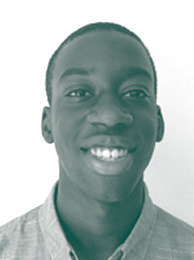 PROJECT
PROJECTImpact of Microbiome Bacteria on Plant Yield and Iron Acquisition
ORGANIZATION / LOCATIONPrinceton Vertical Farming Project, Princeton University- Princeton, New Jersey
MENTOR(S)Paul Gauthier, Associate Research Scholar, Geosciences
SEE PRESENTATIONThe increase in the world’s population has caused a rising demand for food and a need for greater food security. While vertical farming is a possible solution to increasing the world’s food supply, little is known about how soil microbes and bacteria would affect the nutrient acquisition of plants in a vertical-farming setup. I investigated how the use of microbes and iron chelators — which bond to metal ions to reduce their reactivity — affected the growth and acquisition of iron in plants. I designed a hydroponic system in which I germinated several varieties of seeds and cultivated multiple species of plants. I measured and maintained the pH of the nutrient solutions in which the plants grew. I collected nutrient solution samples and analyzed their trace metals using inductively coupled plasma mass spectrometry (ICP-MS). I also used spectrometry to analyze chlorophyll concentration in the plant leaves. Through this internship, I learned a myriad of laboratory techniques, furthered my data-analysis skills and developed coding experience in Python. While my future career may not involve plant research, this internship increased my interest in continuing to study the sciences. It also gave me insights on how plants can be used to understand biological issues in humans.
-
Iyer, Sneha ’20
Mechanical and Aerospace Engineering





 PROJECT
PROJECTPotable Water for Pusunchás
ORGANIZATION / LOCATIONEngineers Without Borders (EWB), Princeton Chapter, Peru- Otuzco, Peru
MENTOR(S)Peter Jaffe, William L. Knapp ’47 Professor of Civil Engineering, Professor of Civil and Environmental Engineering, Princeton University; Don Moris, Technical Mentor, EWB; Russell Turner, Responsible Engineer in Charge, EWB
SEE PRESENTATIONCertificate(s): Computer Science
Our team works to provide potable water to the 65 families of Pusunchás, a rural community in the foothills of the Peruvian Andes. Using data collected from our assessment trip in 2016, we had designed a gravity-fed water system consisting of 18 kilometers of pipeline, a 12,000-liter reservoir tank, pressure breaks, and tap stands. This summer, we continued the implementation of our project. With help from our in-country partners, we were able to install more than six kilometers of pipeline, six pressure breaks and 44 tap stands. This work connected more than 220 additional community members to clean drinking water for the first time in 25 years. Leading a team of community members, construction masons, and NGO partners in pursuit of a common goal gave us the opportunity to apply the technical and leadership skills we learned at Princeton to the real world. Working with EWB shaped our understanding of what applied engineering in pursuit of advancing human rights can look like, and inspired us to incorporate this into our career goals.
-
Kick, Nicholas ’20
Civil and Environmental Engineering





 PROJECT
PROJECTPotable Water for Pusunchás
ORGANIZATION / LOCATIONEngineers Without Borders (EWB), Princeton Chapter, Peru- Otuzco, Peru
MENTOR(S)Peter Jaffe, William L. Knapp ’47 Professor of Civil Engineering, Professor of Civil and Environmental Engineering, Princeton University; Don Moris, Technical Mentor, EWB; Russell Turner, Responsible Engineer in Charge, EWB
SEE PRESENTATIONCertificate(s): Entrepreneurship
Our team works to provide potable water to the 65 families of Pusunchás, a rural community in the foothills of the Peruvian Andes. Using data collected from our assessment trip in 2016, we had designed a gravity-fed water system consisting of 18 kilometers of pipeline, a 12,000-liter reservoir tank, pressure breaks, and tap stands. This summer, we continued the implementation of our project. With help from our in-country partners, we were able to install more than six kilometers of pipeline, six pressure breaks and 44 tap stands. This work connected more than 220 additional community members to clean drinking water for the first time in 25 years. Leading a team of community members, construction masons, and NGO partners in pursuit of a common goal gave us the opportunity to apply the technical and leadership skills we learned at Princeton to the real world. Working with EWB shaped our understanding of what applied engineering in pursuit of advancing human rights can look like, and inspired us to incorporate this into our career goals.
-
Lee, Dale ’20
Computer Science






 PROJECT
PROJECTPotable-Water System Implementation for El Cajuil
ORGANIZATION / LOCATIONEngineers Without Borders (EWB), Princeton Chapter, Dominican Republic- El Cajuil, Dominican Republic
MENTOR(S)Peter Jaffe, William L. Knapp ’47 Professor of Civil Engineering, Professor of Civil and Environmental Engineering, Princeton University; Nolan Perreira, Responsible Engineer in Charge, EWB
SEE PRESENTATIONCertificate(s): Urban Studies
For phase two of our project, we installed a chlorination and filtration system to purify the water going into the main storage tank. Automatic air-release valves were installed along critical points in the line to release trapped air and increase flow throughout the system. Water meters were added at critical sections of the pipeline to assess water usage. Float valves were repaired and reinstalled in the main storage tank to prevent overflow due to excess water coming in from the source. A proposed looped section of pipeline for an area where the community is expanding residentially was surveyed. This looped section would allow for more water pressure and equal water distribution throughout the system. All the piping and critical sections of the pipeline were purchased and delivered to the community, including the tie-in near the tank, the tie-in at the bottom of the community, and a bridge spanning a 100-foot gorge.
-
Lohmann, Jack ’19
English
 PROJECT
PROJECTNauru: Research on Mining Histories
ORGANIZATION / LOCATIONPrinceton Environmental Institute, Princeton University- Australia; Kiribati; Republic of Nauru
MENTOR(S)Rob Nixon, Thomas A. and Currie C. Barron Family Professor in Humanities and the Environment, Professor of English and the Princeton Environmental Institute
Certificate(s): Environmental Studies, Journalism
The Republic of Nauru, the world’s smallest island country, is located in a remote region of the Pacific Ocean. Nauru is the site of two complementary human-initiated crises: the near-total destruction of the physical landscape by phosphate mining and, in recent years, the operation of a controversial refugee-detention regime under the direction of Australia that is generally hidden from public view. I lived in Nauru this summer to document life for the natives and refugees who spend their lives in this tiny, environmentally ravaged land. I gathered materials about the history and culture of the island, and I conducted interviews with some of the refugees held there since 2013. I also spoke informally with many people about the state of Nauru. I created an evidentiary record of locations throughout the island that are used for phosphate extraction, refugee detention and agriculture. My thesis, based on this work, explores the relationship between environmental degradation and the loss of human rights.
-
Manning, Madison ’20
Chemical and Biological Engineering






 PROJECT
PROJECTPotable-Water System Implementation for El Cajuil
ORGANIZATION / LOCATIONEngineers Without Borders (EWB), Princeton Chapter, Dominican Republic- El Cajuil, Dominican Republic
MENTOR(S)Peter Jaffe, William L. Knapp ’47 Professor of Civil Engineering, Professor of Civil and Environmental Engineering, Princeton University; Nolan Perreira, Responsible Engineer in Charge, EWB
SEE PRESENTATIONCertificate(s): Materials Science and Engineering
For phase two of our project, we installed a chlorination and filtration system to purify the water going into the main storage tank. Automatic air-release valves were installed along critical points in the line to release trapped air and increase flow throughout the system. Water meters were added at critical sections of the pipeline to assess water usage. Float valves were repaired and reinstalled in the main storage tank to prevent overflow due to excess water coming in from the source. A proposed looped section of pipeline for an area where the community is expanding residentially was surveyed. This looped section would allow for more water pressure and equal water distribution throughout the system. All the piping and critical sections of the pipeline were purchased and delivered to the community, including the tie-in near the tank, the tie-in at the bottom of the community, and a bridge spanning a 100-foot gorge.
-
Overbey, Scott ’21
Woodrow Wilson School





 PROJECT
PROJECTPotable Water for Pusunchás
ORGANIZATION / LOCATIONEngineers Without Borders (EWB), Princeton Chapter, Peru- Otuzco, Peru
MENTOR(S)Peter Jaffe, William L. Knapp ’47 Professor of Civil Engineering, Professor of Civil and Environmental Engineering, Princeton University; Don Moris, Technical Mentor, EWB; Russell Turner, Responsible Engineer in Charge, EWB
SEE PRESENTATIONCertificate(s): History and the Practice of Diplomacy, Urban Studies, Values and Public Life
Our team works to provide potable water to the 65 families of Pusunchás, a rural community in the foothills of the Peruvian Andes. Using data collected from our assessment trip in 2016, we had designed a gravity-fed water system consisting of 18 kilometers of pipeline, a 12,000-liter reservoir tank, pressure breaks, and tap stands. This summer, we continued the implementation of our project. With help from our in-country partners, we were able to install more than six kilometers of pipeline, six pressure breaks and 44 tap stands. This work connected more than 220 additional community members to clean drinking water for the first time in 25 years. Leading a team of community members, construction masons, and NGO partners in pursuit of a common goal gave us the opportunity to apply the technical and leadership skills we learned at Princeton to the real world. Working with EWB shaped our understanding of what applied engineering in pursuit of advancing human rights can look like, and inspired us to incorporate this into our career goals.
-
Ramirez, Matthew ’19
Ecology and Evolutionary Biology
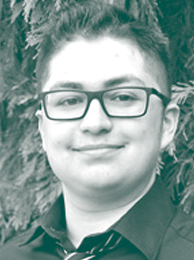 PROJECT
PROJECTN.J. Environmental Policy: Municipal Stormwater Management
ORGANIZATION / LOCATIONThe Watershed Institute- Pennington, New Jersey
MENTOR(S)Michael Pisauro, Policy Director, The Watershed Institute
SEE PRESENTATIONCertificate(s): Environmental Studies
I researched environmental policy specifically focused on municipal stormwater ordinances in New Jersey. I compiled ordinances that examined whether and how local government had gone beyond the minimum state standards in drafting its own stormwater management regime with regard to several key factors. This work was supplemented by regular field excursions, such as helping advocate for cleanwater issues with legislators at the New Jersey State House. I also participated in working groups with a nearby town’s administration to strengthen a future version of their stormwater ordinance, and I attended planningboard hearings on the environmental impacts of proposed developments. This experience strengthened my desire to pursue a full-time career in environmental policy. It sharpened my skills in research and writing, while greatly enhancing my familiarity with the drafting and implementation of laws.
-
Saunders, Dominic ’20
Mechanical and Aerospace Engineering






 PROJECT
PROJECTPotable-Water System Implementation for El Cajuil
ORGANIZATION / LOCATIONEngineers Without Borders (EWB), Princeton Chapter, Dominican Republic- El Cajuil, Dominican Republic
MENTOR(S)Peter Jaffe, William L. Knapp ’47 Professor of Civil Engineering, Professor of Civil and Environmental Engineering, Princeton University; Nolan Perreira, Responsible Engineer in Charge, EWB
SEE PRESENTATIONCertificate(s): Robotics and Intelligent Systems, Sustainable Energy
For phase two of our project, we installed a chlorination and filtration system to purify the water going into the main storage tank. Automatic air-release valves were installed along critical points in the line to release trapped air and increase flow throughout the system. Water meters were added at critical sections of the pipeline to assess water usage. Float valves were repaired and reinstalled in the main storage tank to prevent overflow due to excess water coming in from the source. A proposed looped section of pipeline for an area where the community is expanding residentially was surveyed. This looped section would allow for more water pressure and equal water distribution throughout the system. All the piping and critical sections of the pipeline were purchased and delivered to the community, including the tie-in near the tank, the tie-in at the bottom of the community, and a bridge spanning a 100-foot gorge.
-
Shaw, Kal ’21
Electrical Engineering



 PROJECT
PROJECTPotable-Water System for Kiburanga and Kubweye
ORGANIZATION / LOCATIONEngineers Without Borders (EWB), Princeton Chapter, Kenya- Isebania, Migori County, Kenya
MENTOR(S)Peter Jaffe, William L. Knapp ’47 Professor of Civil Engineering, Professor of Civil and Environmental Engineering, Princeton University; Mahiri Mwita, Lecturer in Princeton Institute for International and Regional Studies
SEE PRESENTATIONCertificate(s): Neuroscience
Princeton EWB Kenya has been working in the Kuria West district of southwest Kenya since 2013. The team has designed and implemented three rainwater catchment systems in the communities of Komosoko and Muchebe. This year, in addition to monitoring the success of the past projects, we implemented borehole wells and handpumps at Kubweye Primary School and Kiburanga Primary School. We learned from community surveys that families in the area frequently wait in long lines for water, especially during the dry season. They often resort to drinking untreated river water, which leads to typhoid outbreaks. We were excited to hit enough water at both well sites to sustain the students and faculty at the primary schools and provide water for the surrounding community. The team also encouraged the election of, and held trainings for, water committees at both schools that will handle the operation, maintenance and finances for the boreholes. We handed over ownership and responsibility for the boreholes to the water committees, and we are confident that these dedicated people will ensure the boreholes can serve the schools for many years.
-
Shitaye, Beimnet ’20
Mechanical and Aerospace Engineering
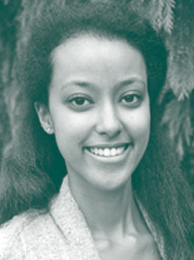 PROJECT
PROJECTExpanding Princeton’s Vertical Farm
ORGANIZATION / LOCATIONPrinceton Vertical Farming Project, Princeton University- Princeton, New Jersey
MENTOR(S)Paul Gauthier, Associate Research Scholar, Geosciences
SEE PRESENTATIONCertificate(s): Sustainable Energy
I spent my summer learning about and understanding Princeton’s vertical farm as part of an ongoing effort to expand it and make the farm more accessible to the student body. My internship combined engineering with understanding the inner workings of the business side of vertical farming. Using a pre-purchased railing system, I devised a plan to produce the space-saving vertical farm envisioned. After working to perfect a 3D-printed plate, I was able to connect the shelving units to the rails to create a working system. By the end of the summer, not only had we successfully accomplished the construction of a smaller-scale farm in Forbes College, but we also had integrated the added necessary components of practicality, affordability and resourcefulness
-
Stevens, Riley ’20
Chemical and Biological Engineering






 PROJECT
PROJECTPotable Water for Pusunchás
ORGANIZATION / LOCATIONEngineers Without Borders (EWB), Princeton Chapter, Peru- Otuzco, Peru
MENTOR(S)Peter Jaffe, William L. Knapp ’47 Professor of Civil Engineering, Professor of Civil and Environmental Engineering, Princeton University; Don Moris, Technical Mentor, EWB; Russell Turner, Responsible Engineer in Charge, EWB
SEE PRESENTATIONCertificate(s): Sustainable Energy
Our team works to provide potable water to the 65 families of Pusunchás, a rural community in the foothills of the Peruvian Andes. Using data collected from our assessment trip in 2016, we had designed a gravity-fed water system consisting of 18 kilometers of pipeline, a 12,000-liter reservoir tank, pressure breaks, and tap stands. This summer, we continued the implementation of our project. With help from our in-country partners, we were able to install more than six kilometers of pipeline, six pressure breaks and 44 tap stands. This work connected more than 220 additional community members to clean drinking water for the first time in 25 years. Leading a team of community members, construction masons, and NGO partners in pursuit of a common goal gave us the opportunity to apply the technical and leadership skills we learned at Princeton to the real world. Working with EWB shaped our understanding of what applied engineering in pursuit of advancing human rights can look like, and inspired us to incorporate this into our career goals.
-
Swagel, Gabriel ’20
Economics
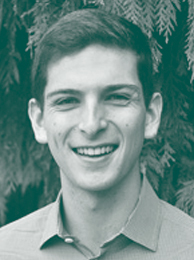 PROJECT
PROJECTResearch Assistant for Sustainable Development: Agricultural Economics in India and China
ORGANIZATION / LOCATIONNITSAN Lab, Tel Aviv University- Tel Aviv, Israel
MENTOR(S)Ram Fishman, Assistant Professor of Public Policy, Tel Aviv University
SEE PRESENTATIONI worked as a research assistant in the NITSAN Lab, an interdisciplinary center for sustainabledevelopment research that focuses on some of the most pressing issues facing the global poor. I worked directly with the lab head, Ram Fishman, on two major projects. The first project focused on fertilizer overuse in Chinese agriculture, a major pollution issue. Using a longitudinal dataset of more than 3 million plotlevel observations, I designed parametric and non-parametric regression models to estimate the response of a variety of crops to nitrogen fertilizer. The second project studied how smallholder farmers in India use water, and the impact of drought on that usage. I helped develop the research question, compile literature on the topic, clean data, design econometric models to identify the effect of drought on water usage, and write drafts of papers. I learned valuable skills in econometric modeling and programming, writing, and working within a team. I also developed an interest in smallholder-farmer welfare. I am building on an insight I had about the possible correlation between soil quality and farm size to write my junior paper on the inverse relationship between farm size and productivity in developing agriculture.
-
Thai, Ethan ’21
Electrical Engineering
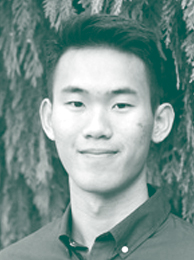 PROJECT
PROJECTElectrokinetics for Separation of Particles and Potential Water Purification
ORGANIZATION / LOCATIONComplex Fluids Group, Department of Mechanical and Aerospace Engineering, Princeton University- Princeton, New Jersey
MENTOR(S)Howard Stone, Donald R. Dixon ’69 and Elizabeth W. Dixon Professor of Mechanical and Aerospace Engineering; Suin Shim, Postdoctoral Research Associate and Lecturer, Mechanical and Aerospace Engineering
SEE PRESENTATIONI worked in the Complex Fluids Group on a project to purify water by using the spontaneous motion, or diffusiophoresis, of water molecules caused by dissolving gas. Being driven by the dissolution of CO2, this filtration method has the potential to provide clean water while requiring little energy input and utilizing a commonly available resource. I performed experiments analyzing the diffusiophoretic effect on the positively charged particle amine-modified polystyrene. I participated in every aspect of this project, from fabricating the microfluidic channels the experiments were performed in, to implementing and expanding the data-collection procedures. I learned techniques in soft lithography, microscopy and even programmable methods of data analysis. This experience gave me insight into the many facets of research and a glimpse into graduate school life, whether it be nifty laboratory techniques or a new understanding of translating data into qualitative and quantitative conclusions.
-
Wang, Jocelyn ’20
Mechanical and Aerospace Engineering






 PROJECT
PROJECTPotable-Water System Implementation for El Cajuil
ORGANIZATION / LOCATIONEngineers Without Borders (EWB), Princeton Chapter, Dominican Republic- El Cajuil, Dominican Republic
MENTOR(S)Peter Jaffe, William L. Knapp ’47 Professor of Civil Engineering, Professor of Civil and Environmental Engineering, Princeton University; Nolan Perreira, Responsible Engineer in Charge, EWB
SEE PRESENTATIONCertificate(s): Robotics and Intelligent Systems
For phase two of our project, we installed a chlorination and filtration system to purify the water going into the main storage tank. Automatic air-release valves were installed along critical points in the line to release trapped air and increase flow throughout the system. Water meters were added at critical sections of the pipeline to assess water usage. Float valves were repaired and reinstalled in the main storage tank to prevent overflow due to excess water coming in from the source. A proposed looped section of pipeline for an area where the community is expanding residentially was surveyed. This looped section would allow for more water pressure and equal water distribution throughout the system. All the piping and critical sections of the pipeline were purchased and delivered to the community, including the tie-in near the tank, the tie-in at the bottom of the community, and a bridge spanning a 100-foot gorge.
-
Waters, Heather ’20
Ecology and Evolutionary Biology
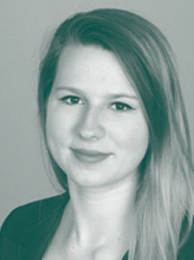 PROJECT
PROJECTImproving the Yield of Edible Flowers in Vertical Farming Systems
ORGANIZATION / LOCATIONPrinceton Vertical Farming Project, Princeton University- Princeton, New Jersey
MENTOR(S)Paul Gauthier, Associate Research Scholar, Geosciences
Certificate(s): Environmental Studies
I worked with the Princeton Vertical Farming Project to explore various aspects of vertical farming in an urban setting. More specifically, my project focused on determining the amounts of edible flowers that can be grown from different species, as well as determining the growing conditions needed to maximize this number. I grew plants from their seeds and observed them through several developmental phases. Through this experience, I gained a deeper knowledge of the complexities of plant biology and the feasibility of hydroponic vertical farming. I improved my skills in handling, analyzing and supporting living systems by altering environmental factors such as pH, electrical conductivity and CO2 levels in the system. I will continue to work on this project and with the Vertical Farming Project during my junior year, and I may take applications from this project with me as I begin to think about my senior thesis.
-
Wright, Elizabeth ’19
English
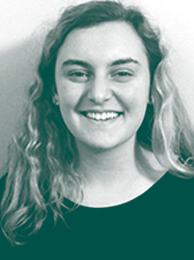 PROJECT
PROJECTDeveloping a Framework for Multi-Benefit Groundwater Replenishment and Trading
ORGANIZATION / LOCATIONEnvironmental Defense Fund (EDF)- San Francisco, California
MENTOR(S)Ann Hayden, Senior Director of California Habitat Exchange and Western Water, EDF; Christina Babbitt, Senior Manager, California Groundwater Program, EDF
SEE PRESENTATIONCertificate(s): Environmental Studies
I created and disseminated a funding menu targeted at farmers in California’s San Joaquin Valley whose irrigation rights will be affected by upcoming state legislation. The valley produces a third of the produce grown in the United States and also contains three of the five poorest cities in the country. The project aimed to protect water quality and supplies for agricultural, urban and wildlife usage. We also sought to maintain and improve the health of ecosystems and species, and to provide for long-term agricultural sustainability and viability in the face of reduced pumping. I wanted to identify incentive programs and mitigation structures that provide clear pathways for compensating landowners who are willing to implement habitat restoration, water recharge or other environmentally beneficial activities on their properties. I researched, wrote and condensed various state and federal funding options to encourage farmers to preserve rather than farm their land. This research included visiting farmers and state agencies to learn what inhibited farmers from seeking land-preservation funding.
-
Yuan, Melissa ’20
Chemistry



 PROJECT
PROJECTPotable-Water System for Kiburanga and Kubweye
ORGANIZATION / LOCATIONEngineers Without Borders (EWB), Princeton Chapter, Kenya- Isebania, Migori County, Kenya
MENTOR(S)Peter Jaffe, William L. Knapp ’47 Professor of Civil Engineering, Professor of Civil and Environmental Engineering, Princeton University; Mahiri Mwita, Lecturer in Princeton Institute for International and Regional Studies
SEE PRESENTATIONCertificate(s): Engineering Biology
Princeton EWB Kenya has been working in the Kuria West district of southwest Kenya since 2013. The team has designed and implemented three rainwater catchment systems in the communities of Komosoko and Muchebe. This year, in addition to monitoring the success of the past projects, we implemented borehole wells and handpumps at Kubweye Primary School and Kiburanga Primary School. We learned from community surveys that families in the area frequently wait in long lines for water, especially during the dry season. They often resort to drinking untreated river water, which leads to typhoid outbreaks. We were excited to hit enough water at both well sites to sustain the students and faculty at the primary schools and provide water for the surrounding community. The team also encouraged the election of, and held trainings for, water committees at both schools that will handle the operation, maintenance and finances for the boreholes. We handed over ownership and responsibility for the boreholes to the water committees, and we are confident that these dedicated people will ensure the boreholes can serve the schools for many years.
-
Yun, Matthew ’21
Electrical Engineering



 PROJECT
PROJECTPotable-Water System for Kiburanga and Kubweye
ORGANIZATION / LOCATIONEngineers Without Borders (EWB), Princeton Chapter, Kenya- Isebania, Migori County, Kenya
MENTOR(S)Peter Jaffe, William L. Knapp ’47 Professor of Civil Engineering, Professor of Civil and Environmental Engineering, Princeton University; Mahiri Mwita, Lecturer in Princeton Institute for International and Regional Studies
SEE PRESENTATIONPrinceton EWB Kenya has been working in the Kuria West district of southwest Kenya since 2013. The team has designed and implemented three rainwater catchment systems in the communities of Komosoko and Muchebe. This year, in addition to monitoring the success of the past projects, we implemented borehole wells and handpumps at Kubweye Primary School and Kiburanga Primary School. We learned from community surveys that families in the area frequently wait in long lines for water, especially during the dry season. They often resort to drinking untreated river water, which leads to typhoid outbreaks. We were excited to hit enough water at both well sites to sustain the students and faculty at the primary schools and provide water for the surrounding community. The team also encouraged the election of, and held trainings for, water committees at both schools that will handle the operation, maintenance and finances for the boreholes. We handed over ownership and responsibility for the boreholes to the water committees, and we are confident that these dedicated people will ensure the boreholes can serve the schools for many years.
-
Zhang, Rei ’21
Civil and Environmental Engineering
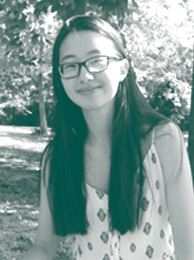 PROJECT
PROJECTSensitivity of Nitrogen Fixation to Ammonium
ORGANIZATION / LOCATIONZhang Lab, Department of Geosciences, Princeton University- Princeton, New Jersey
MENTOR(S)Xinning Zhang, Assistant Professor of Geosciences and the Princeton Environmental Institute; Romain Darnajoux, Postdoctoral Research Fellow, Geosciences; Katja Luxem, Ph.D. candidate, Geosciences
SEE PRESENTATIONI interned for the Zhang microbial biogeochemical lab where I researched nitrogen fixation and its relationship to nitrogen availability. I learned protocols and procedures to help me gather data, including gas chromatography, chemical assays and techniques such as making media. With samples gathered in the field, we set up an experiment to monitor activity over about a week, periodically taking time points. I analyzed the data to determine relationships between nitrogen fixation and environmental levels of nitrogen. I had a great time learning and working in the lab. Beyond the basics of lab work, I learned to finetune protocols, adapt to and learn from failures, and make important judgements independently. I intend to continue my learning and growth as a scientist by exploring further applications of my research during the academic year.



